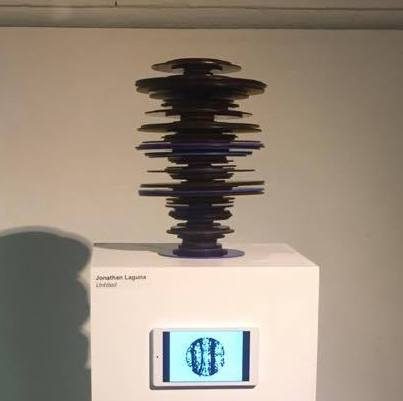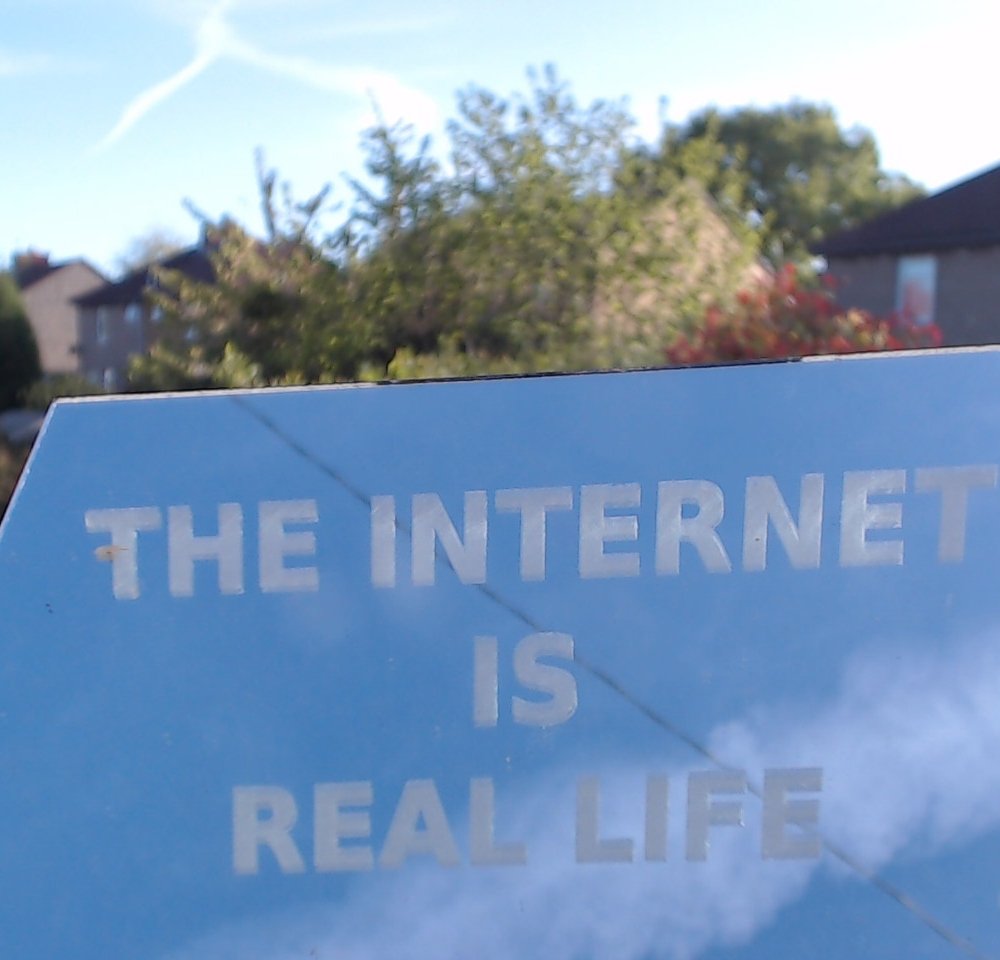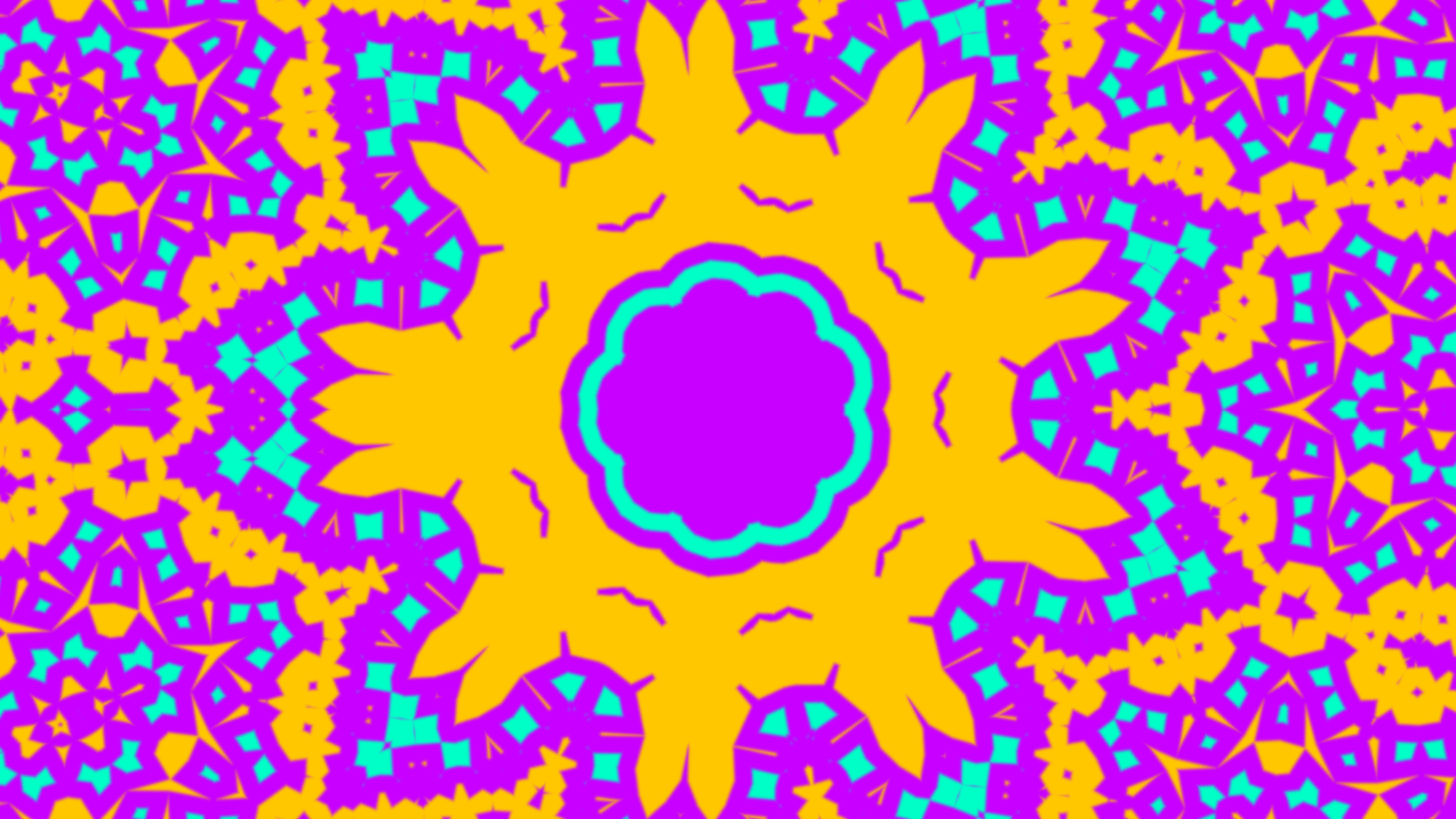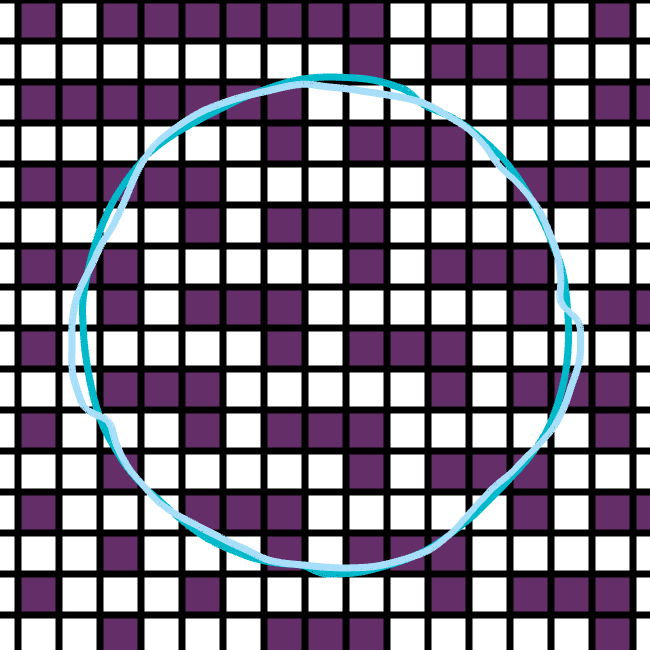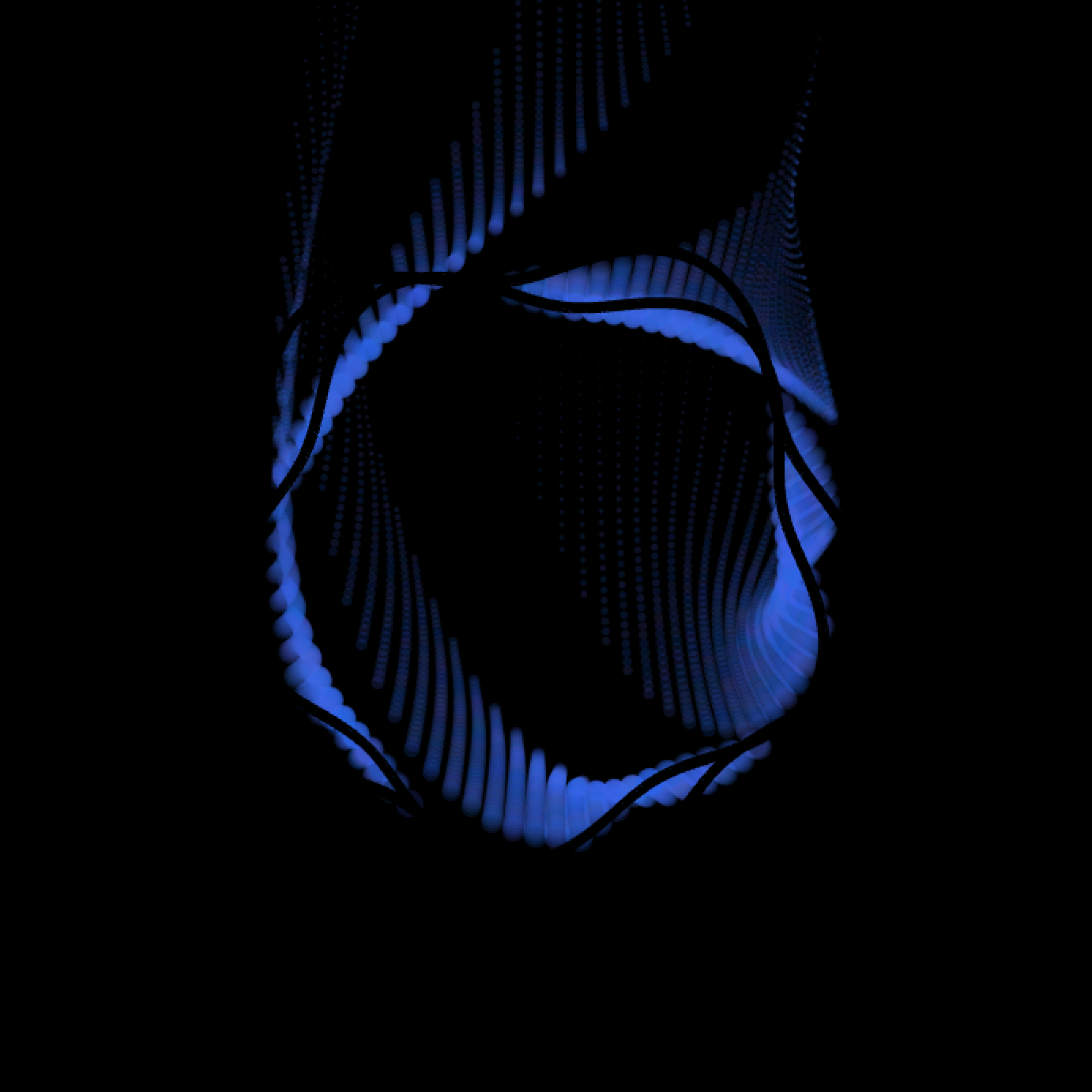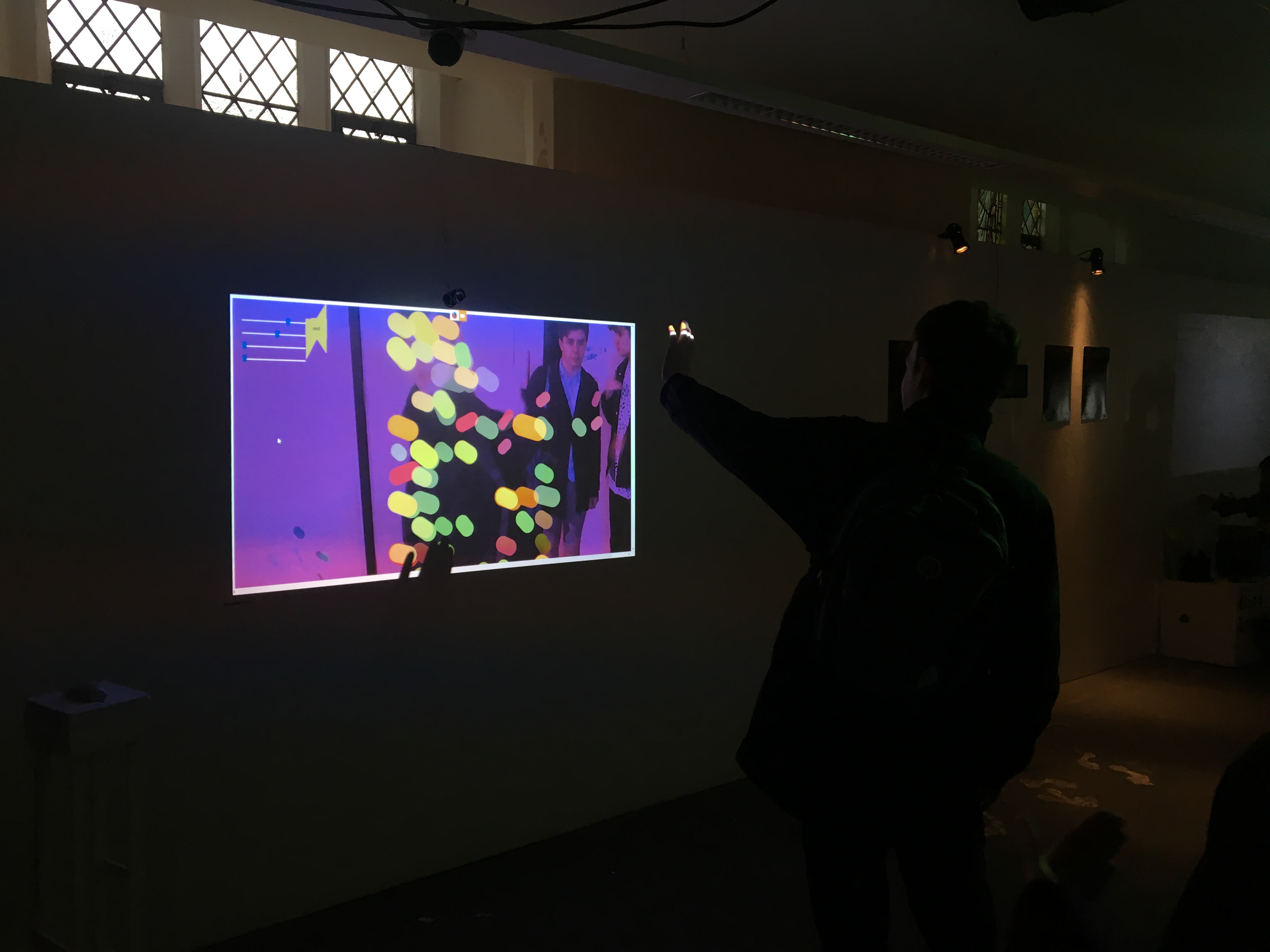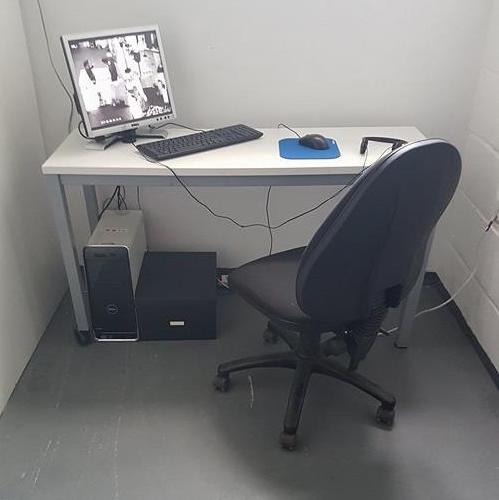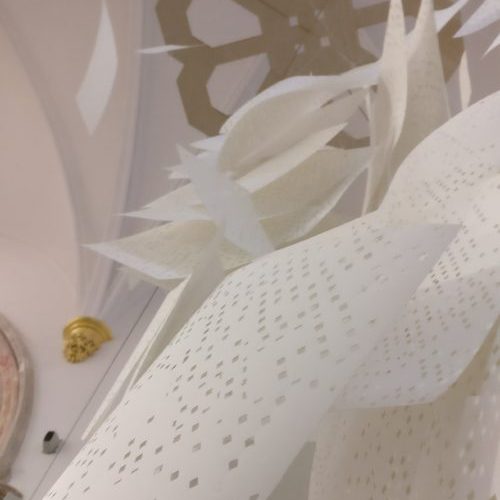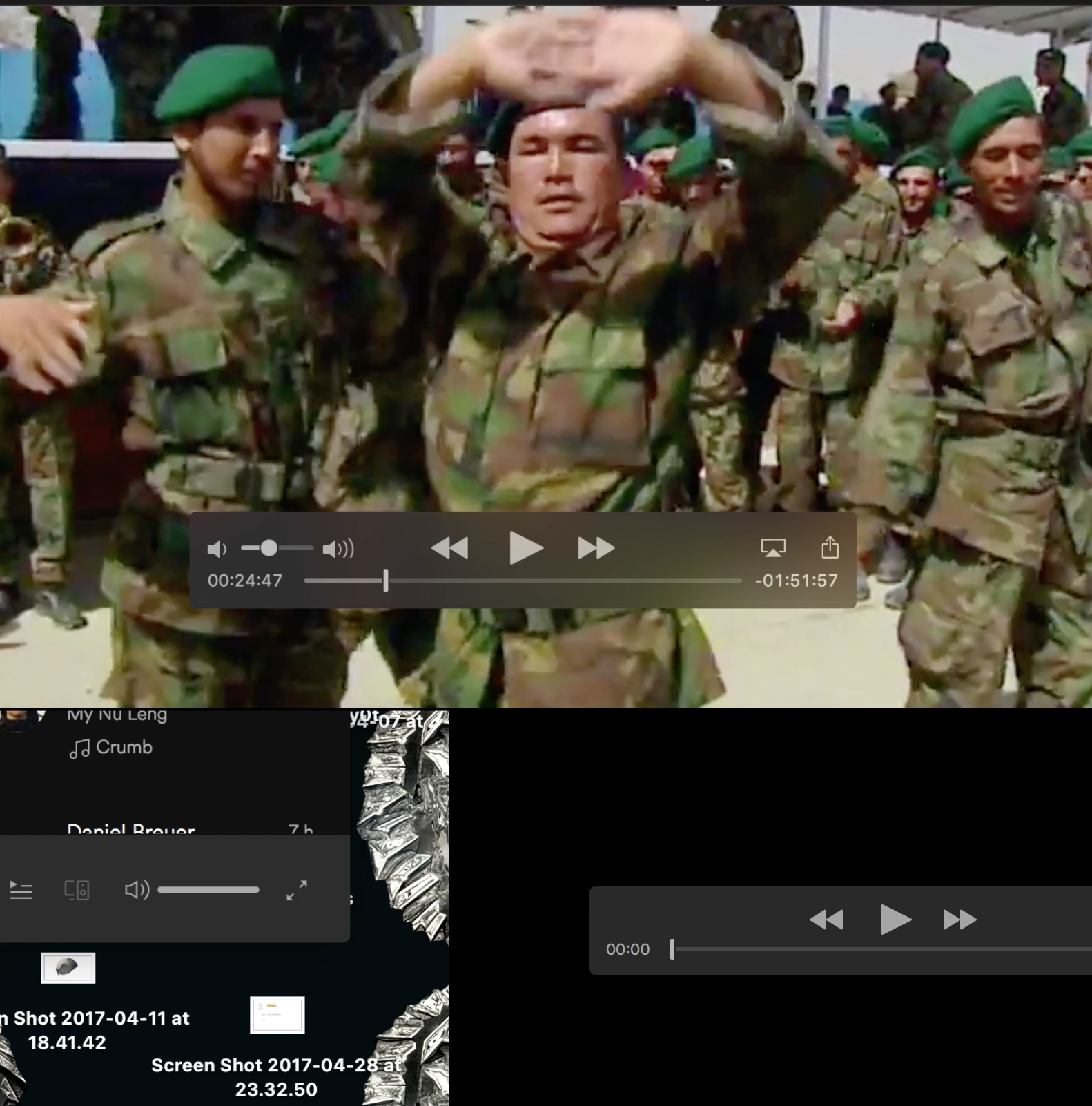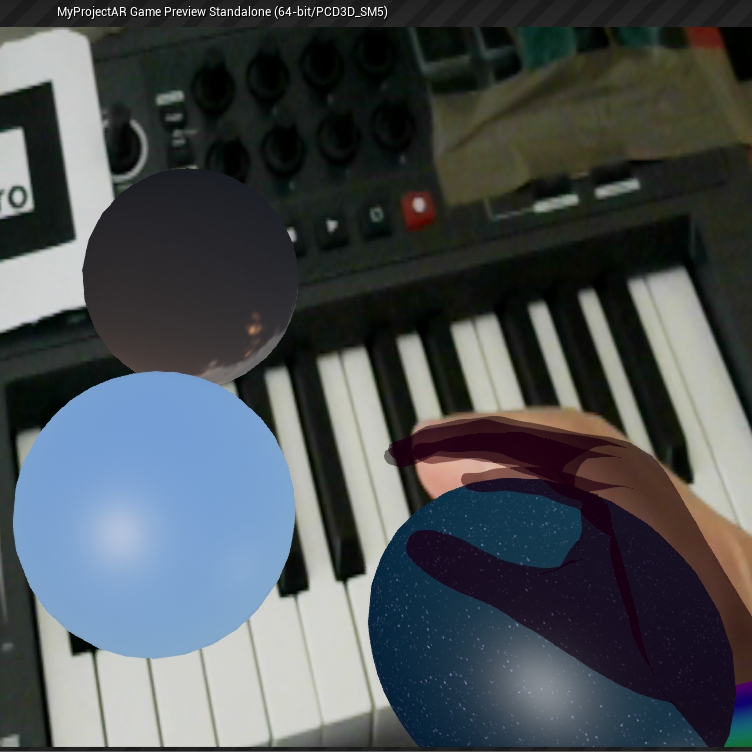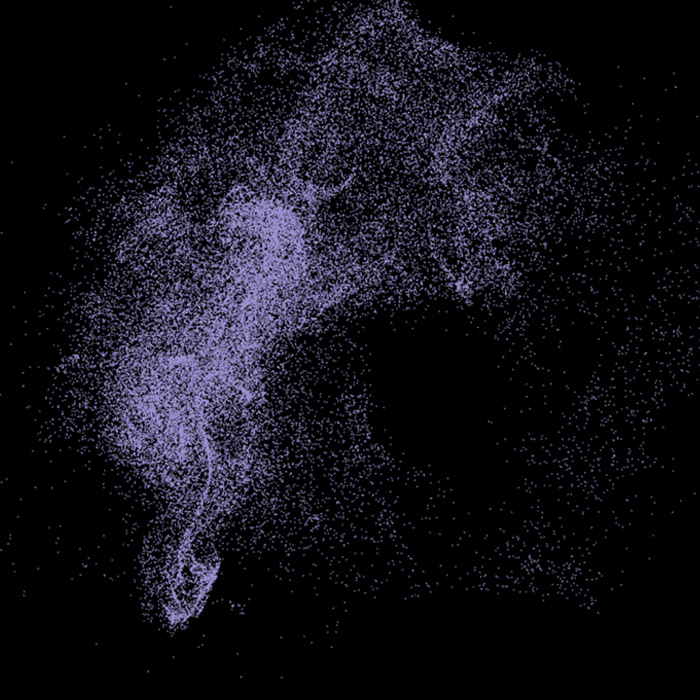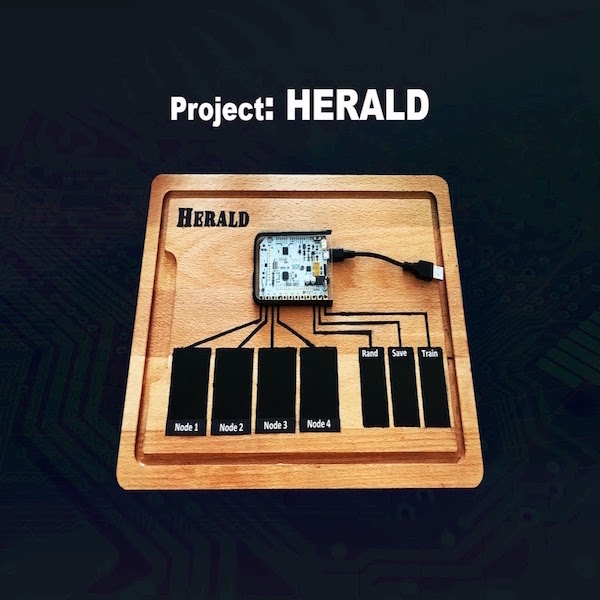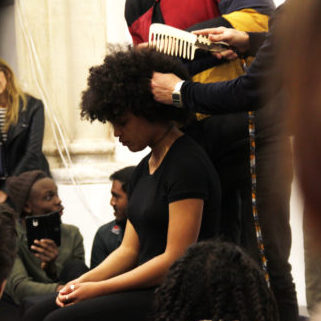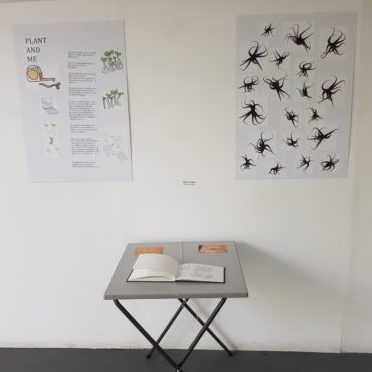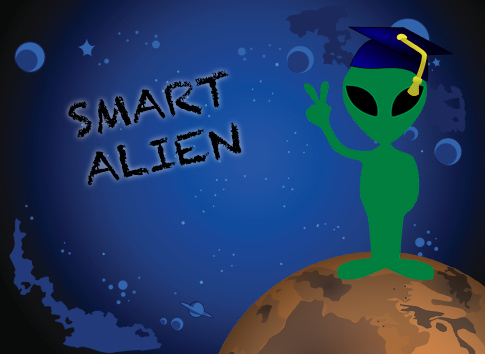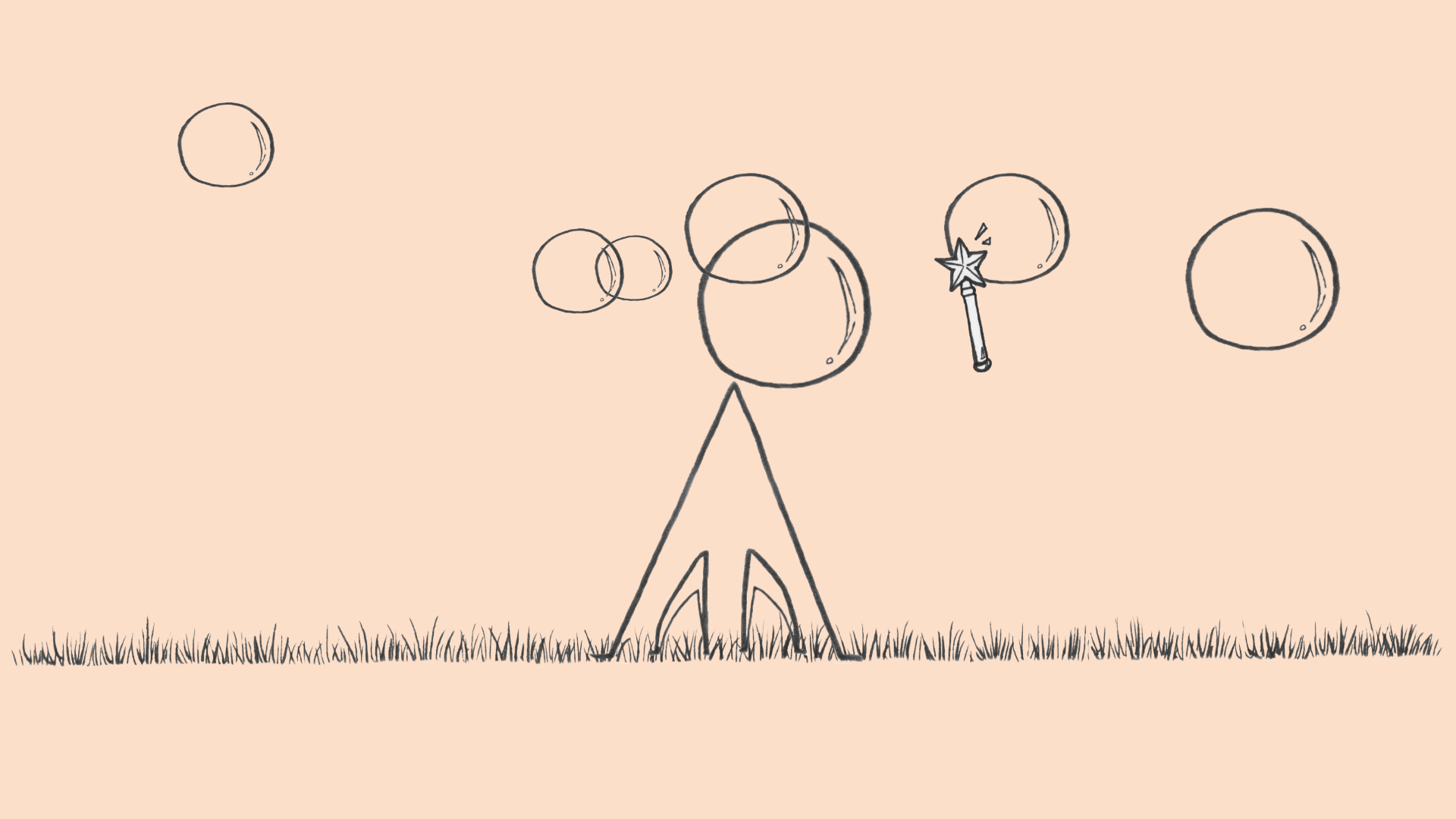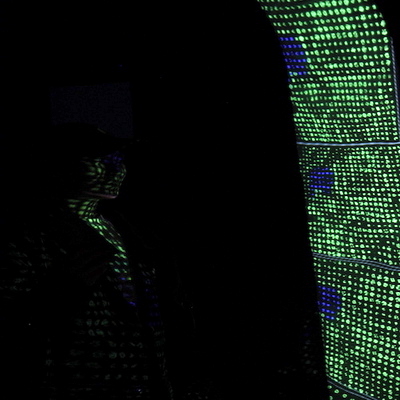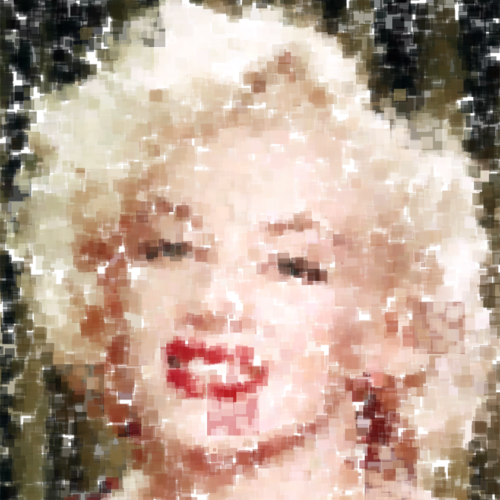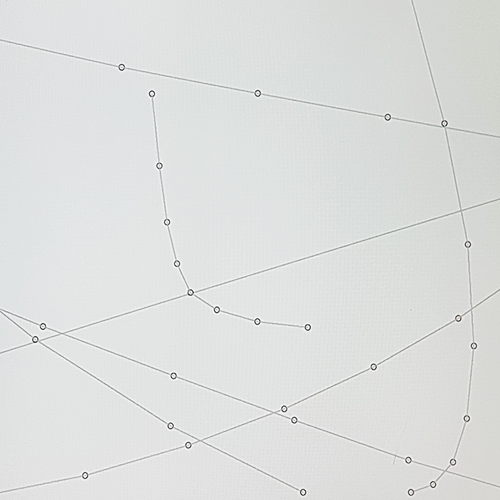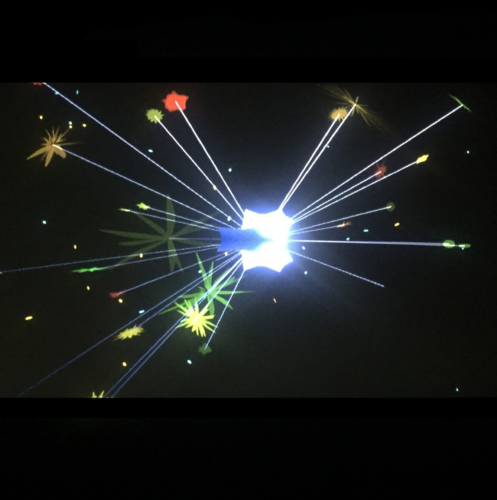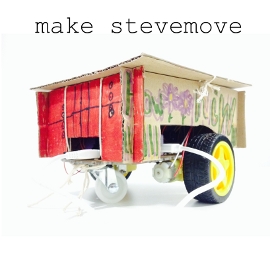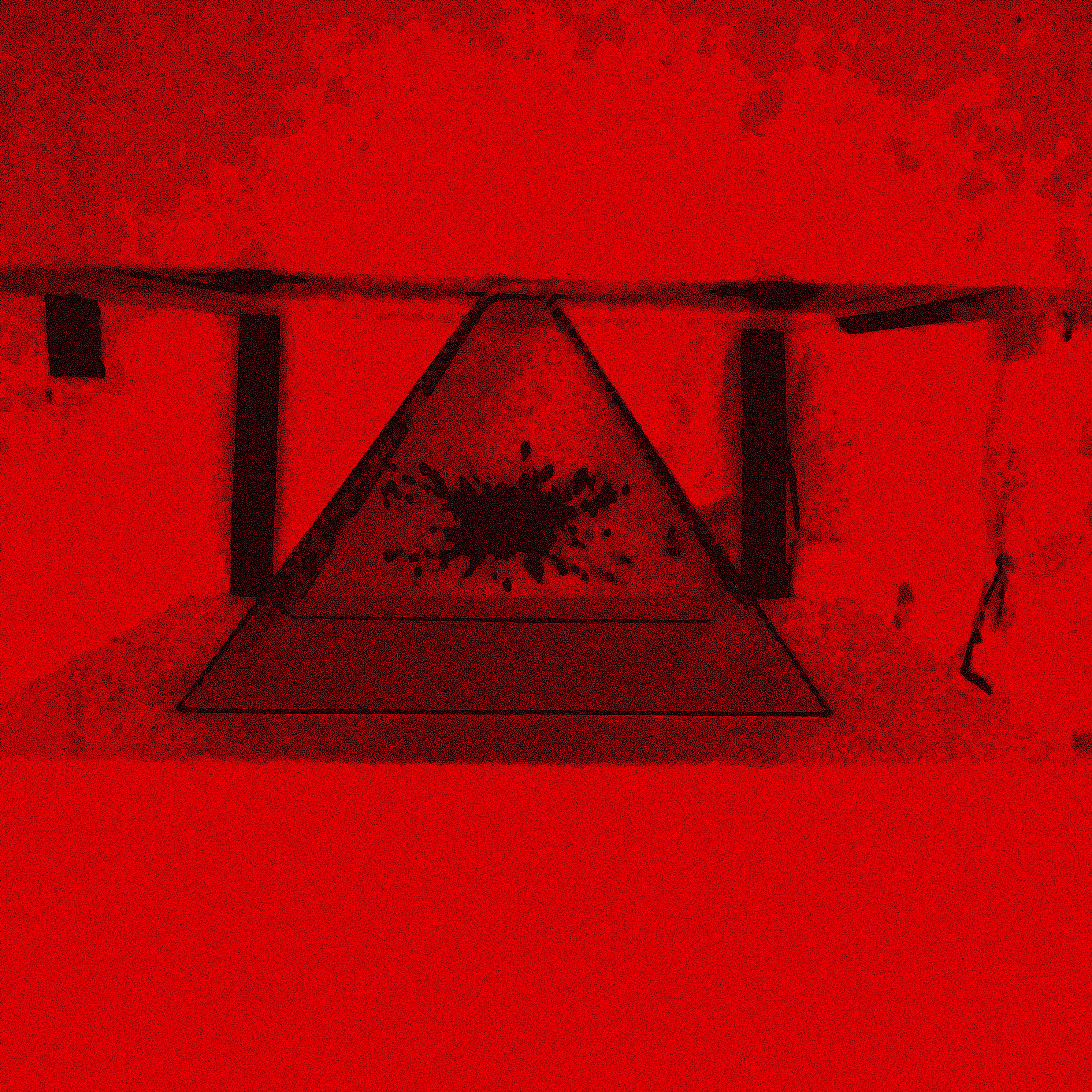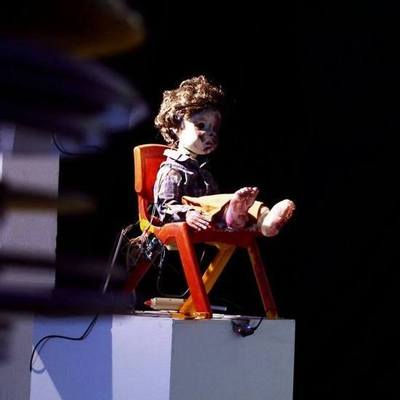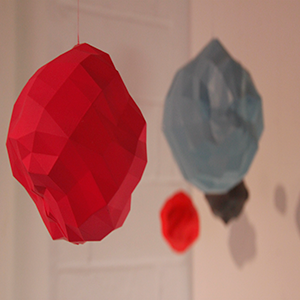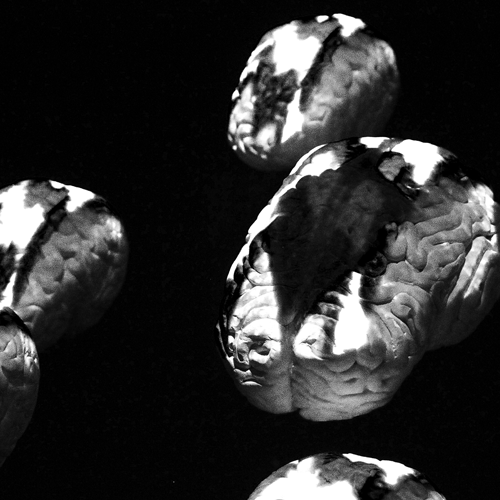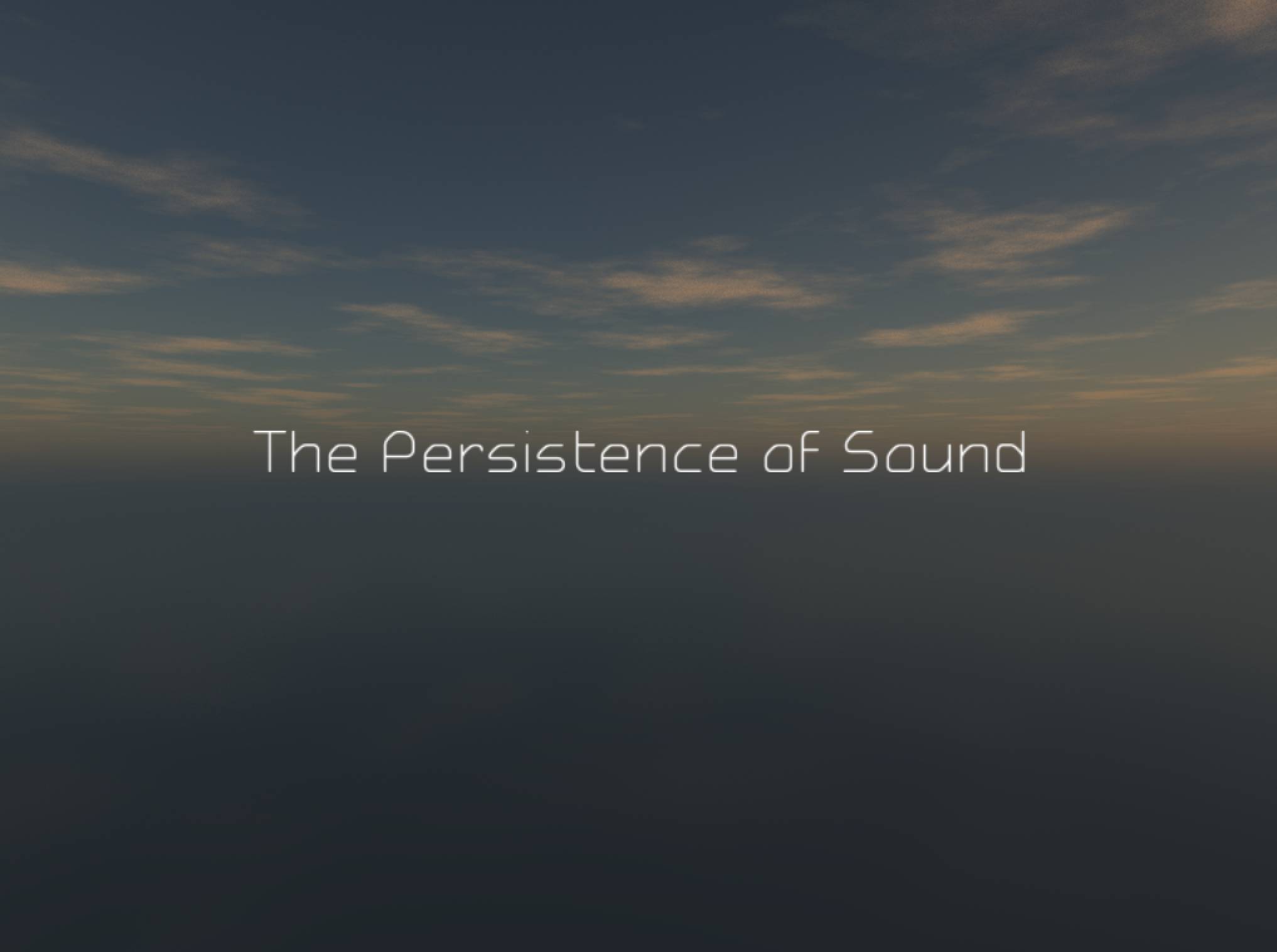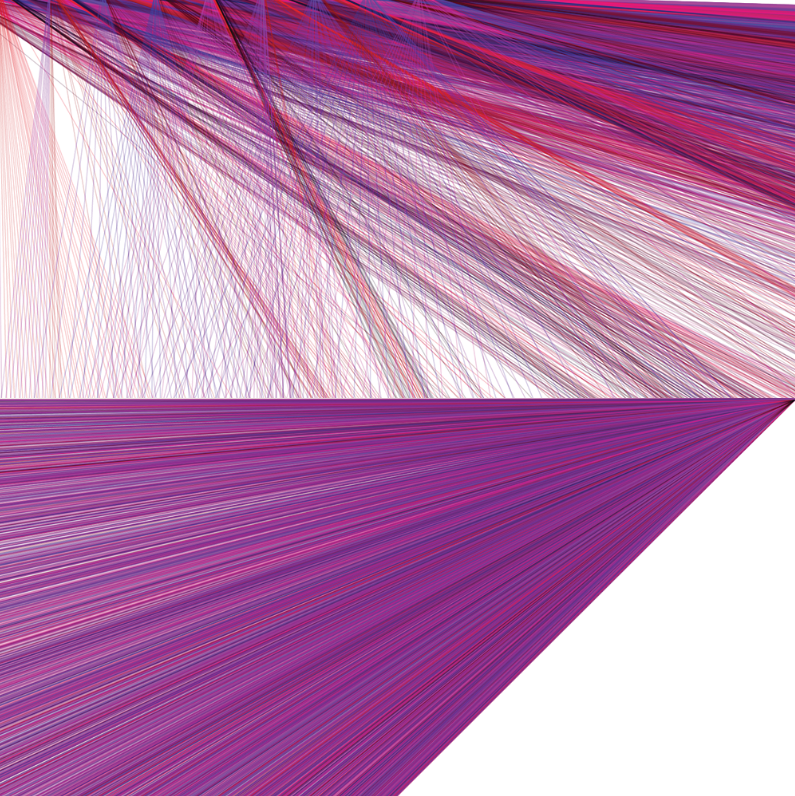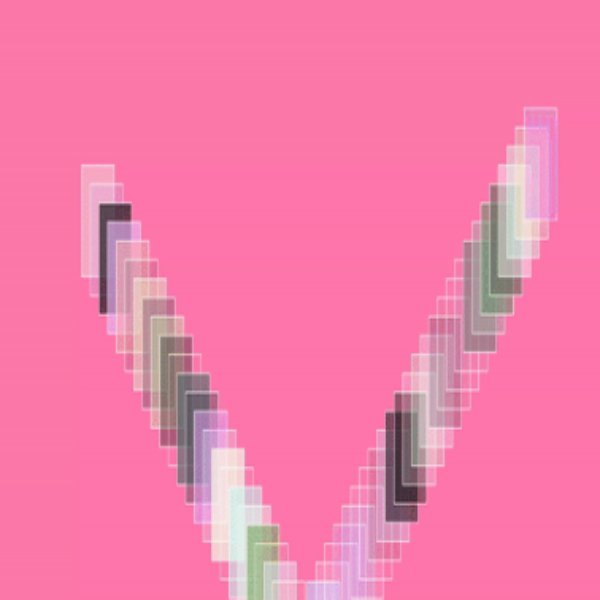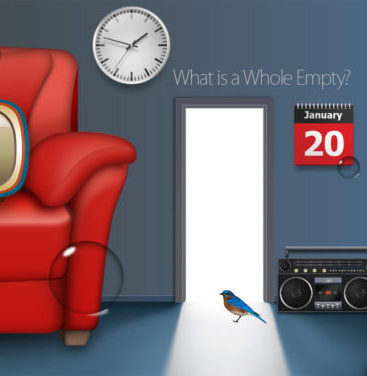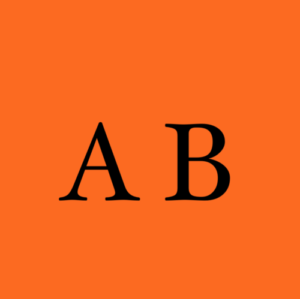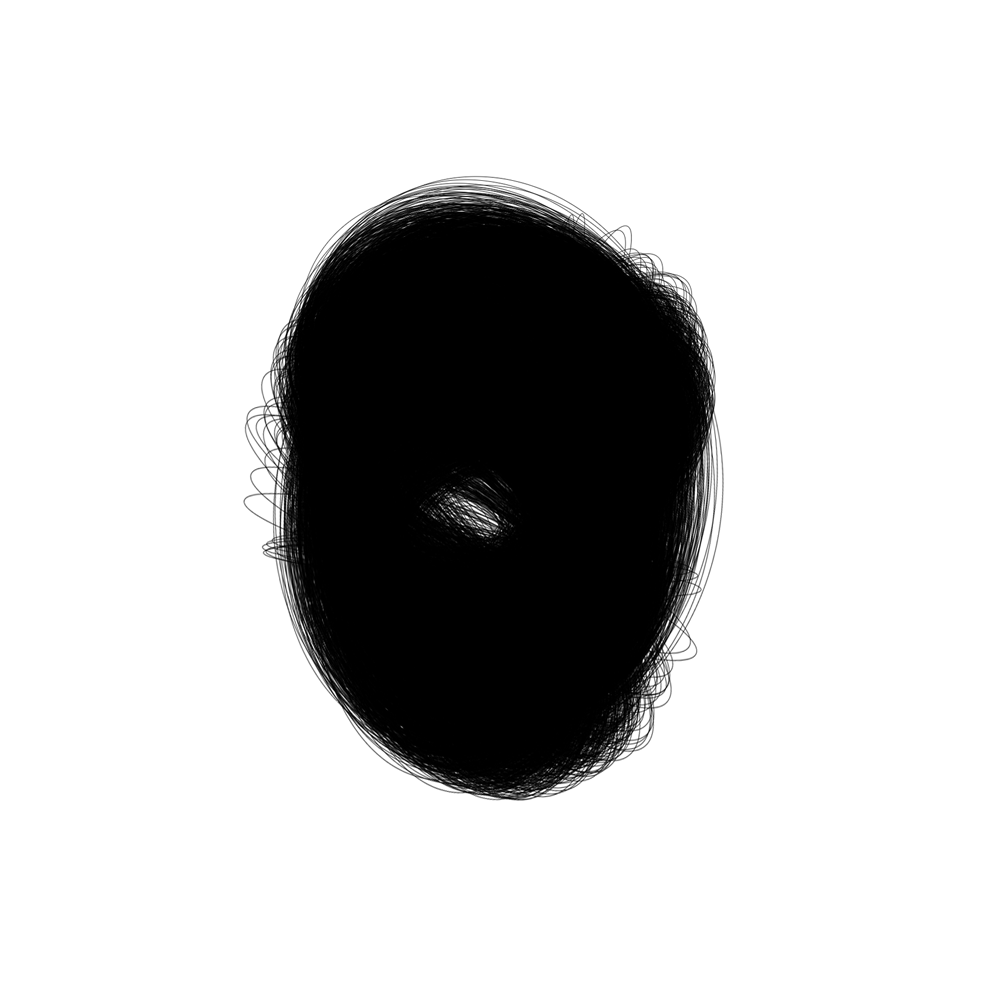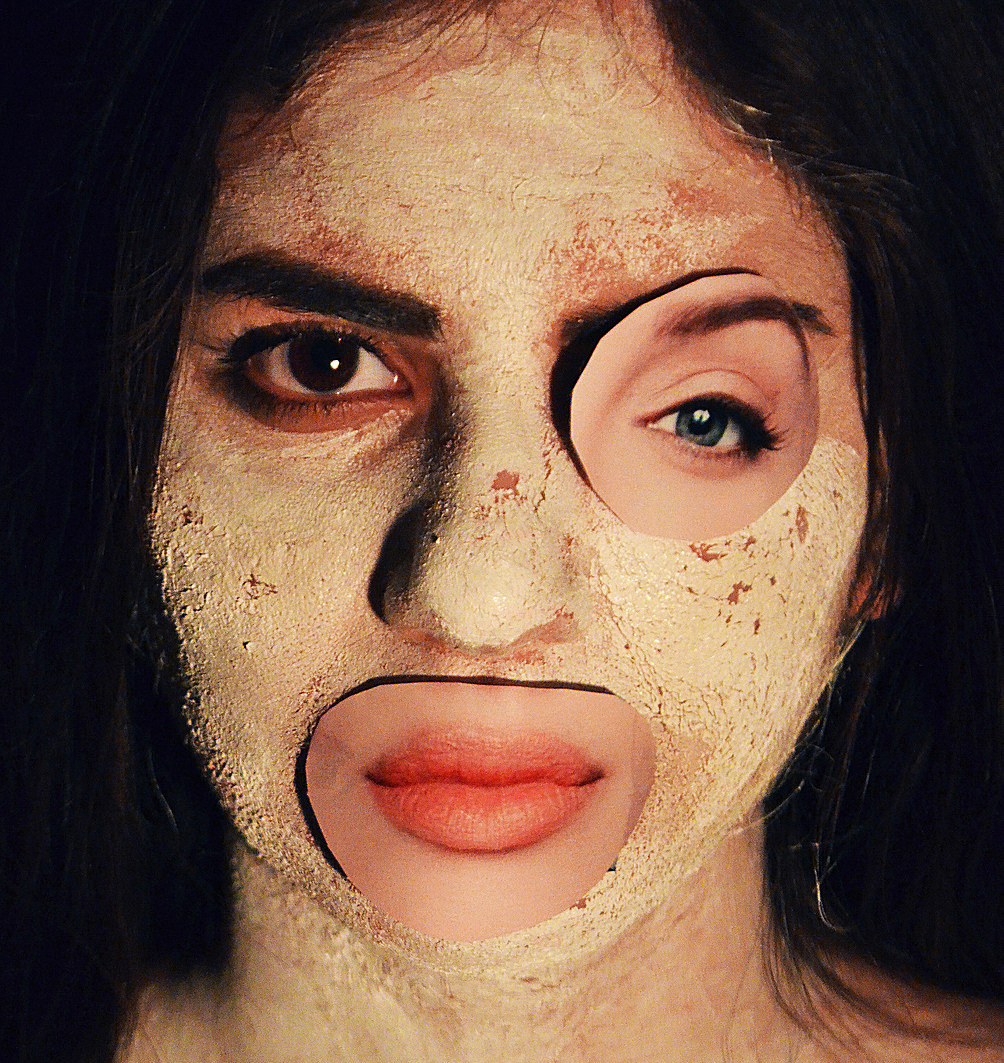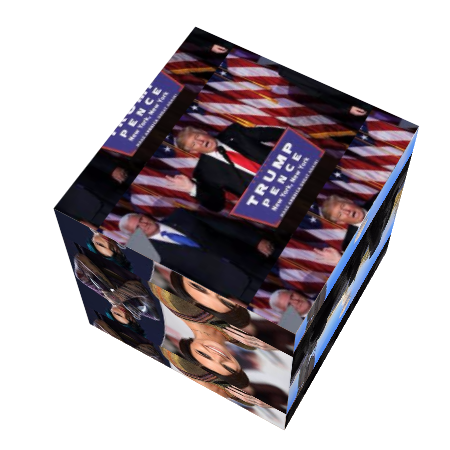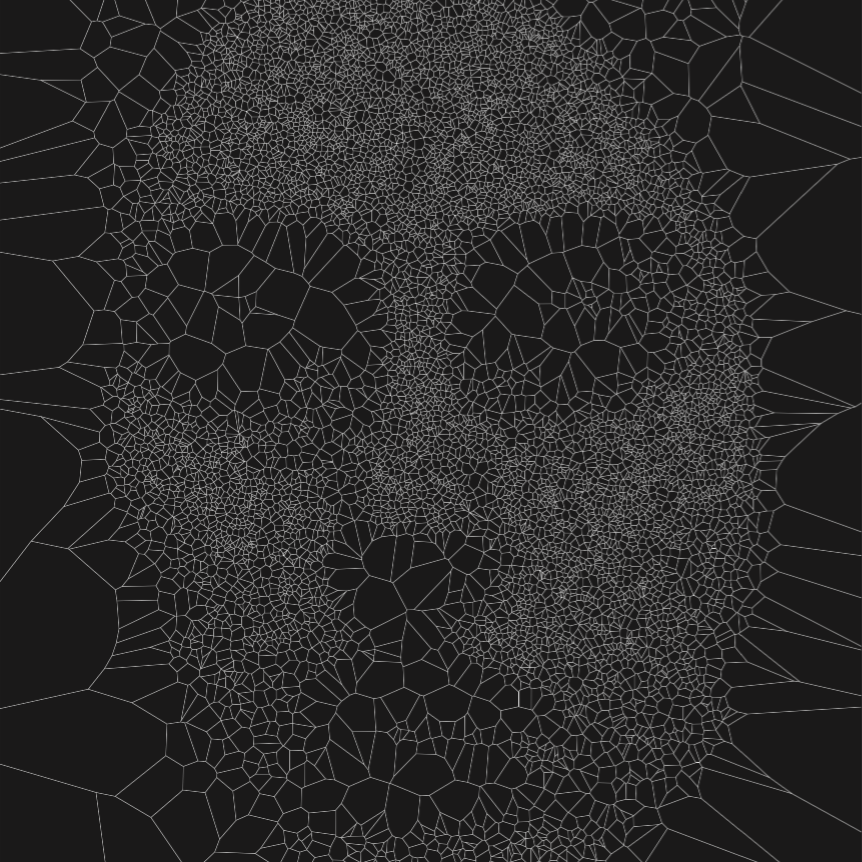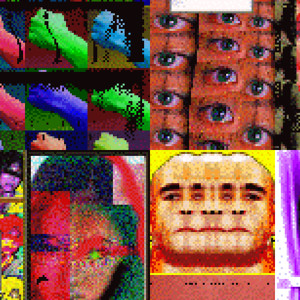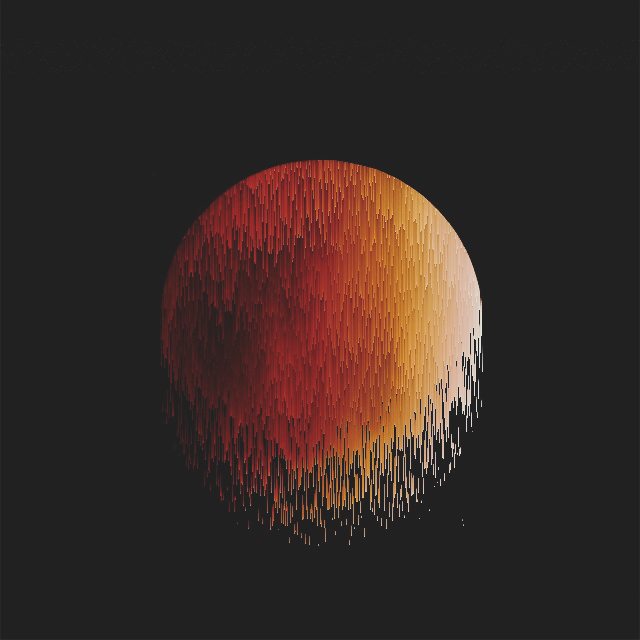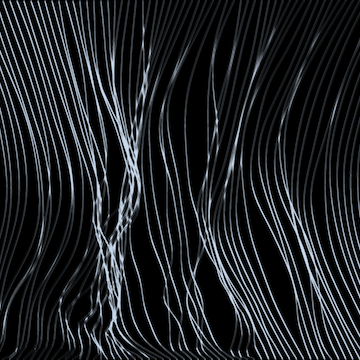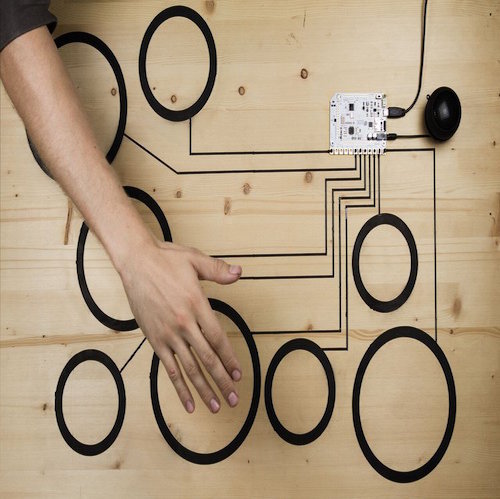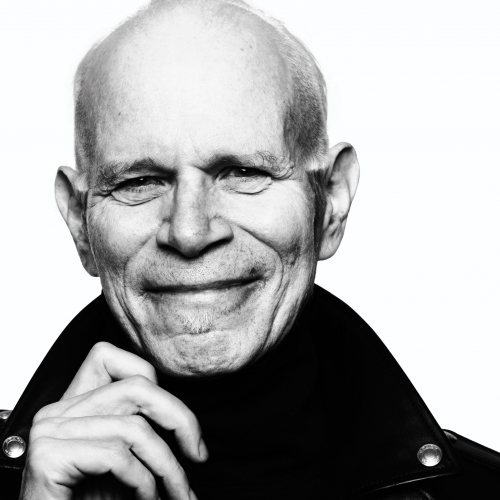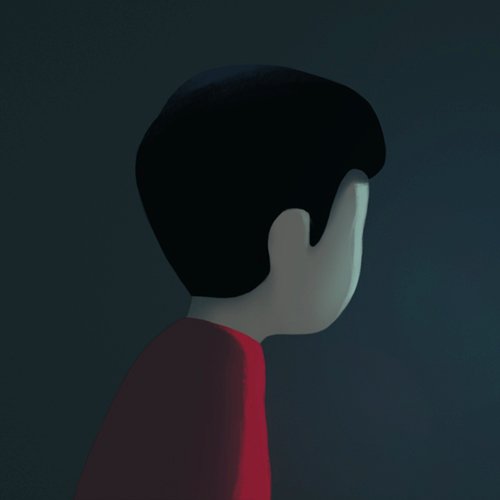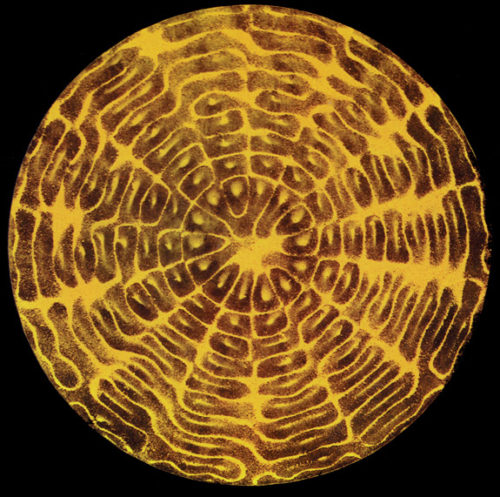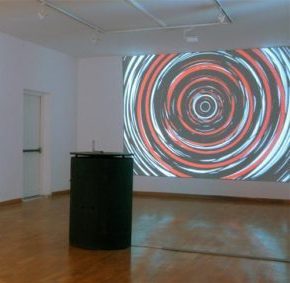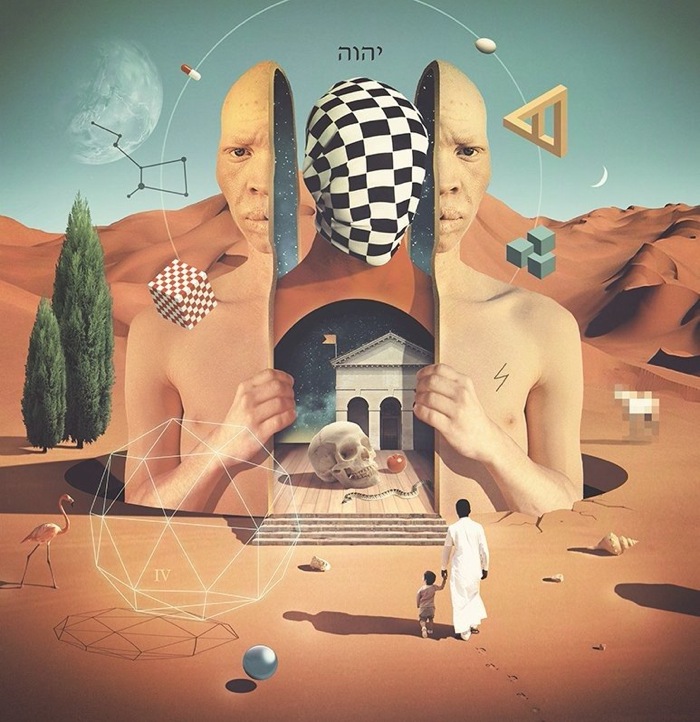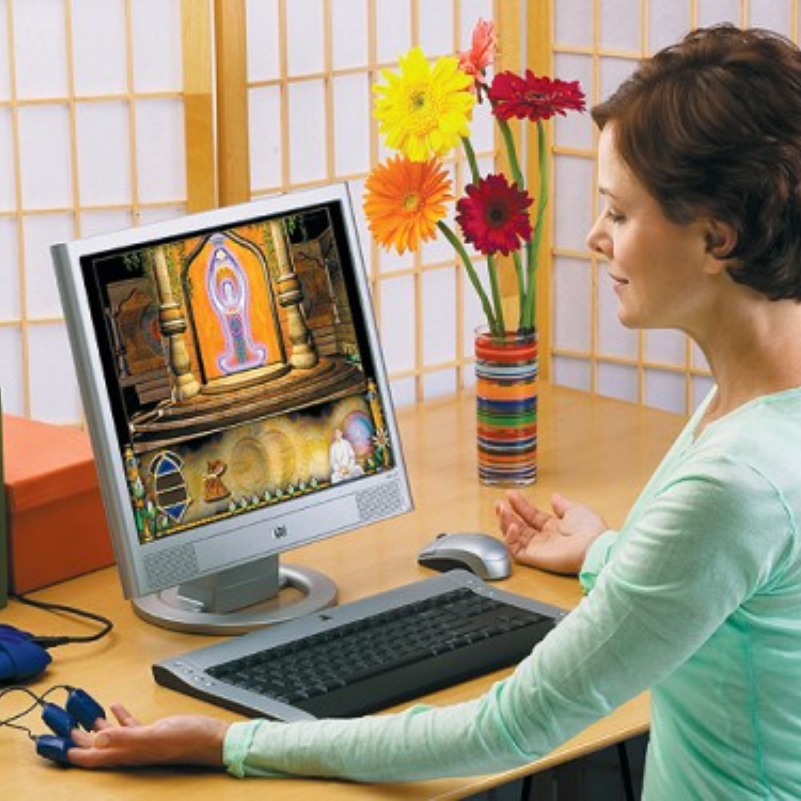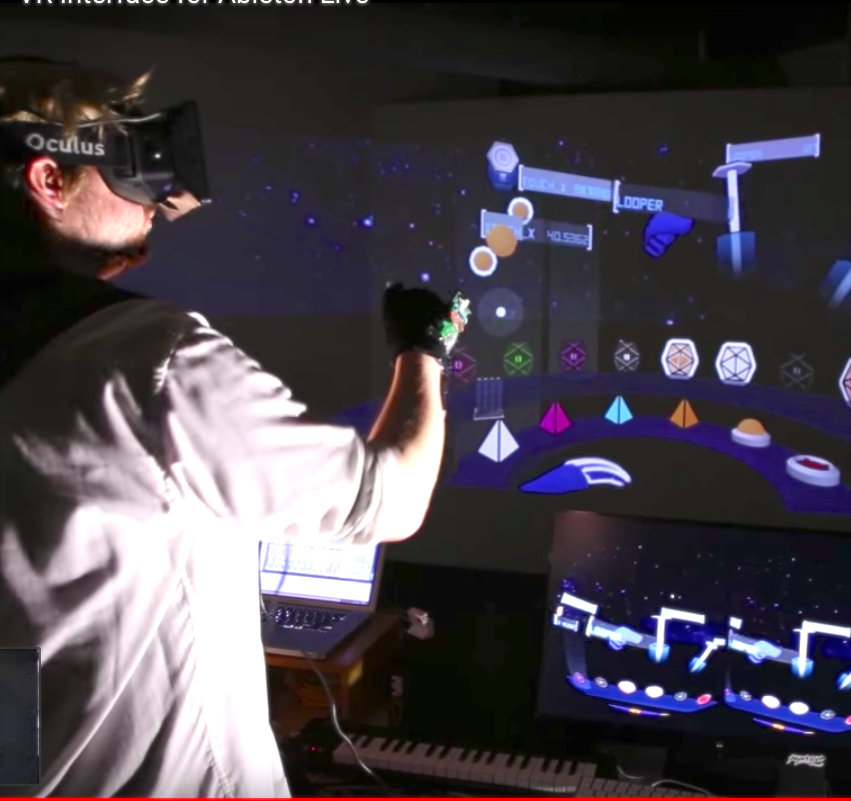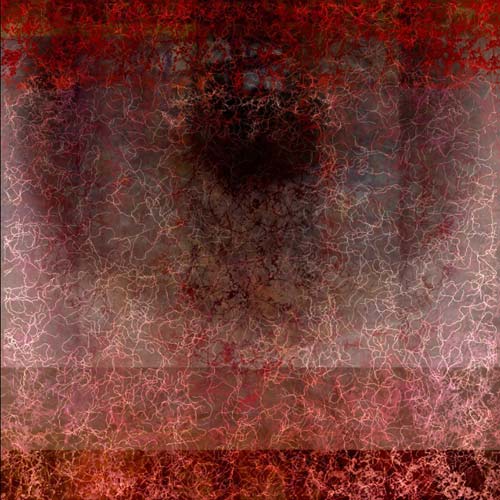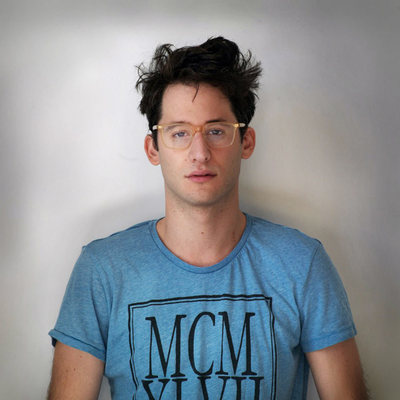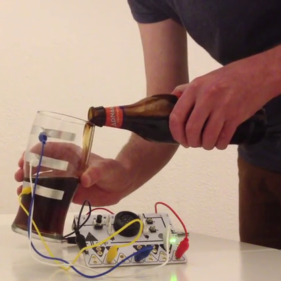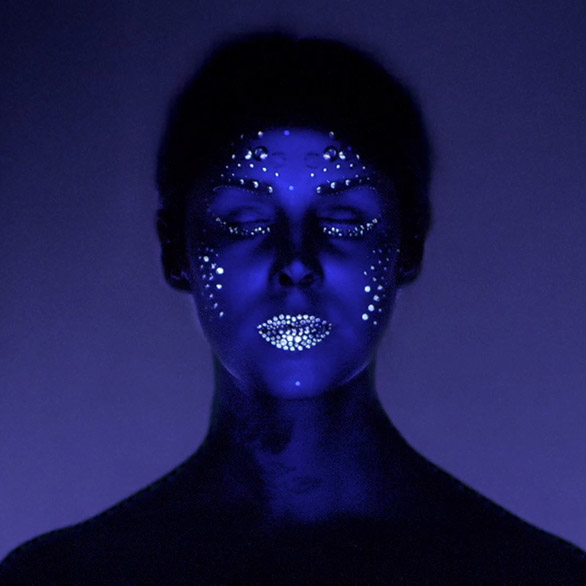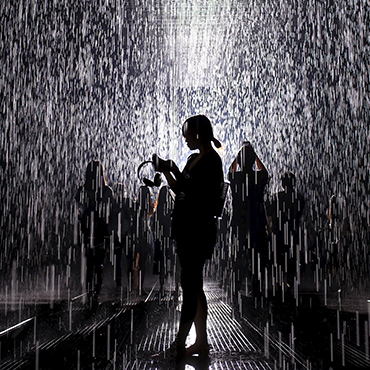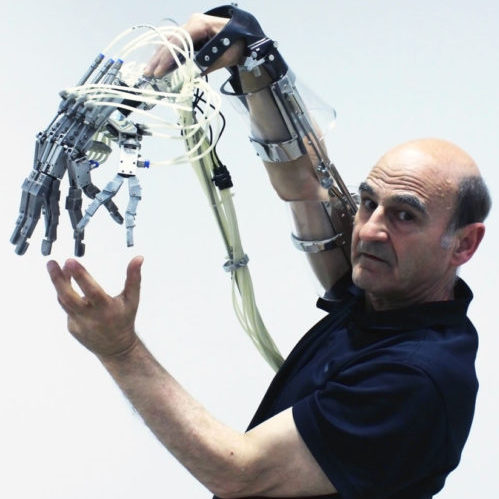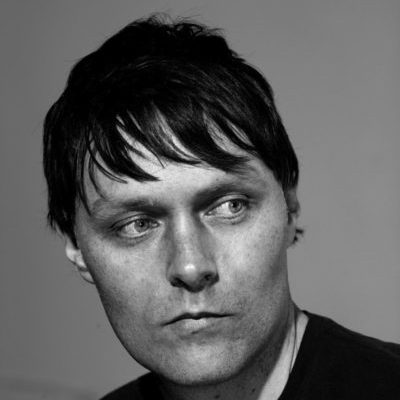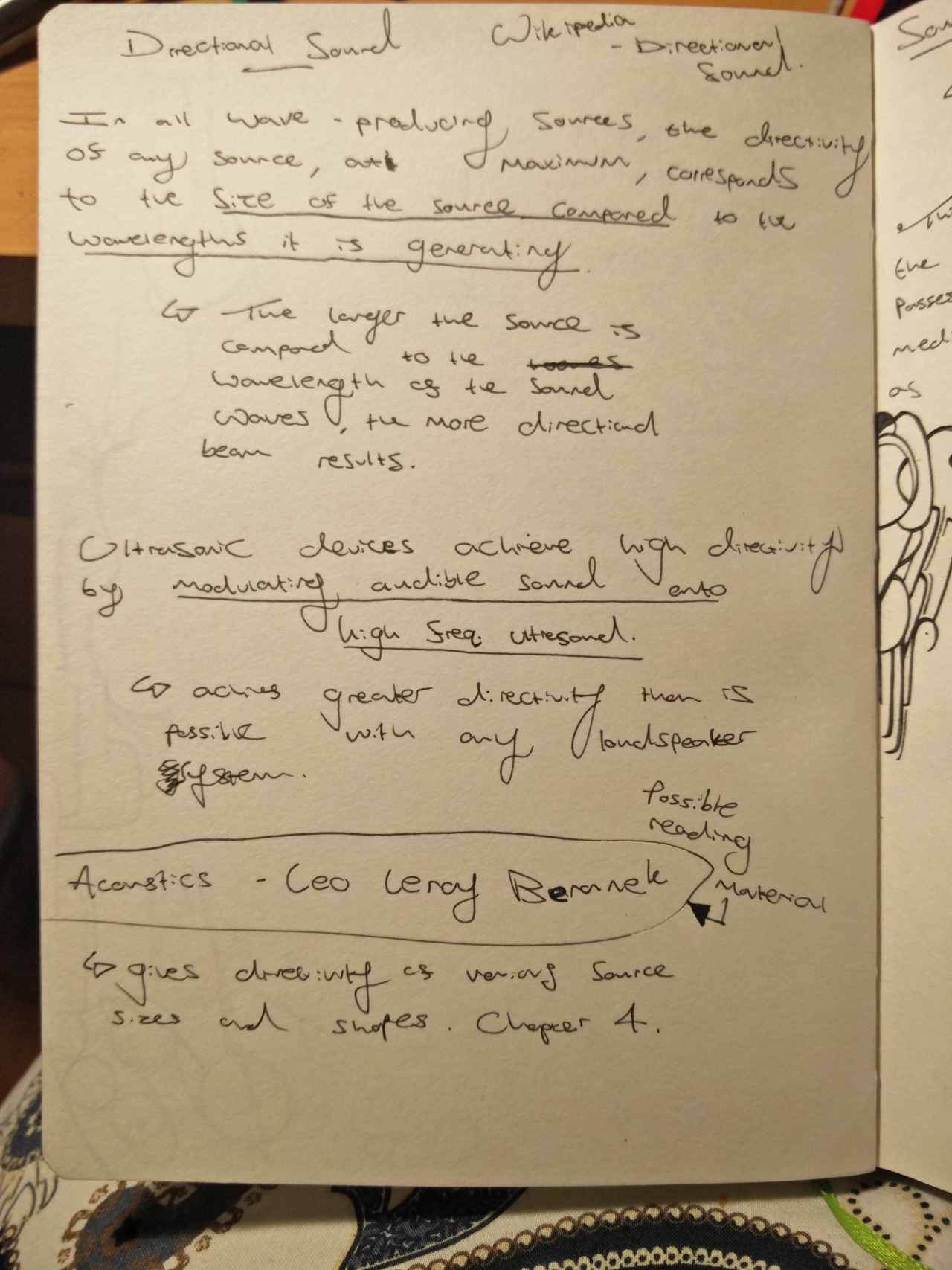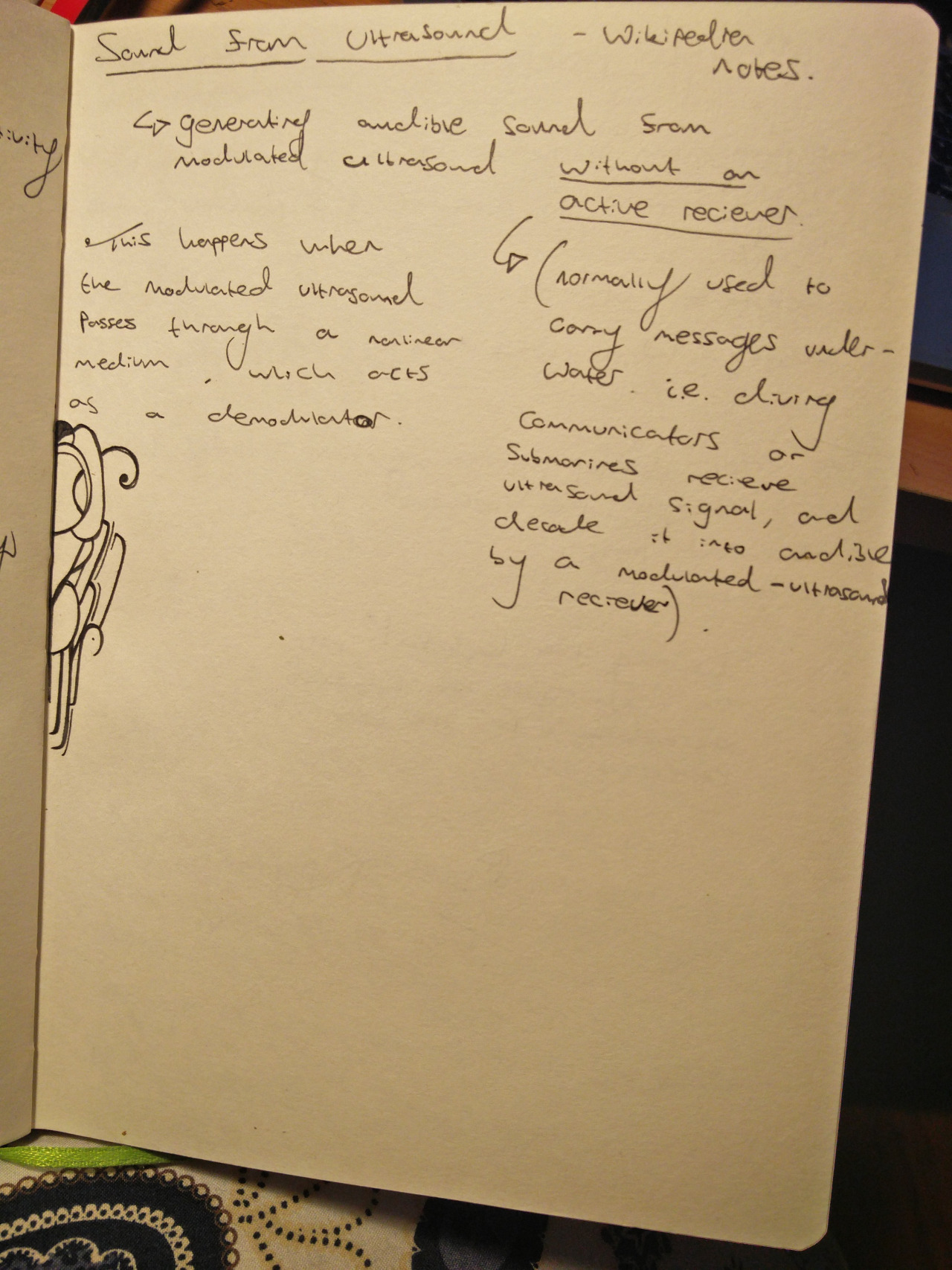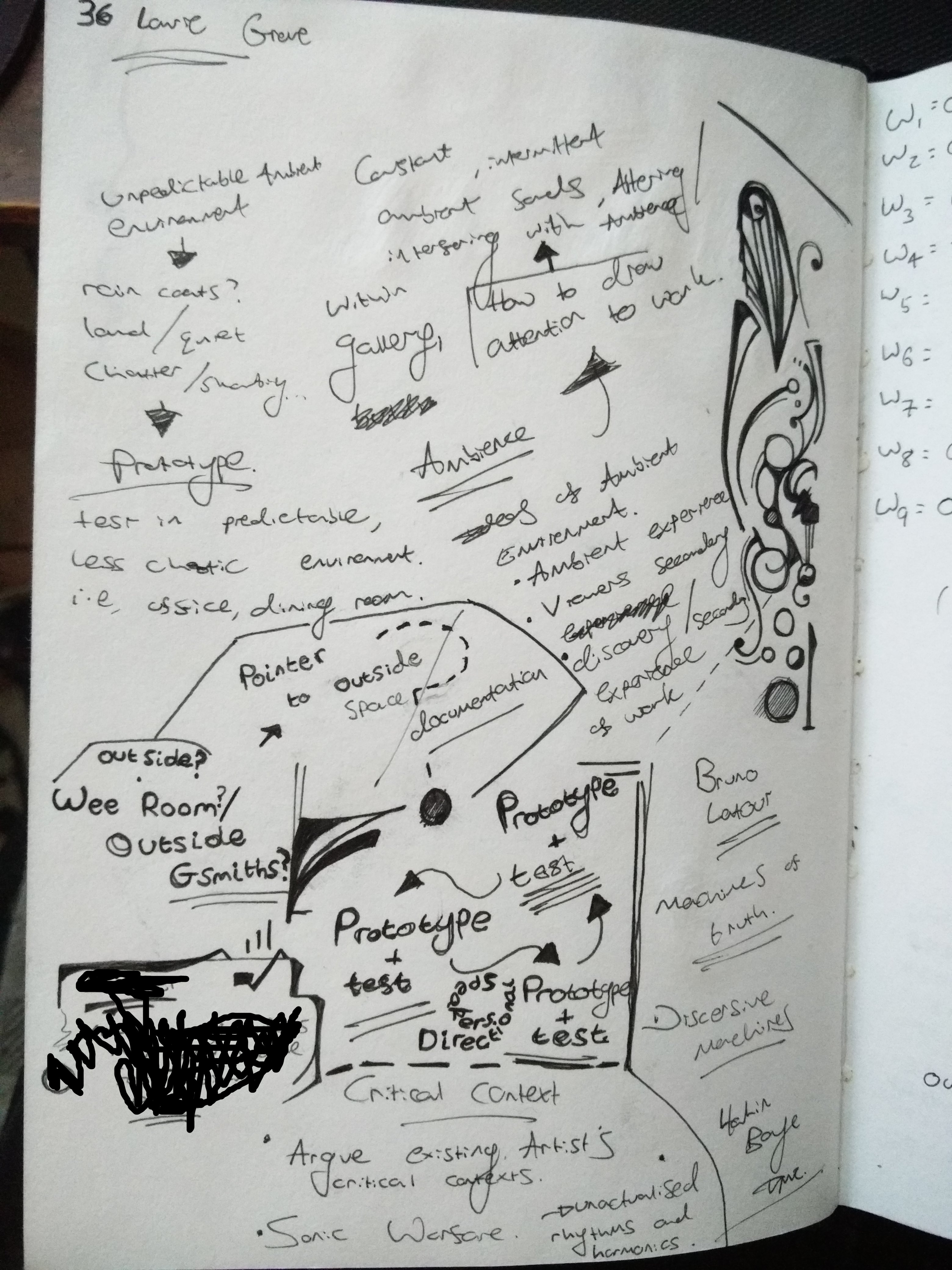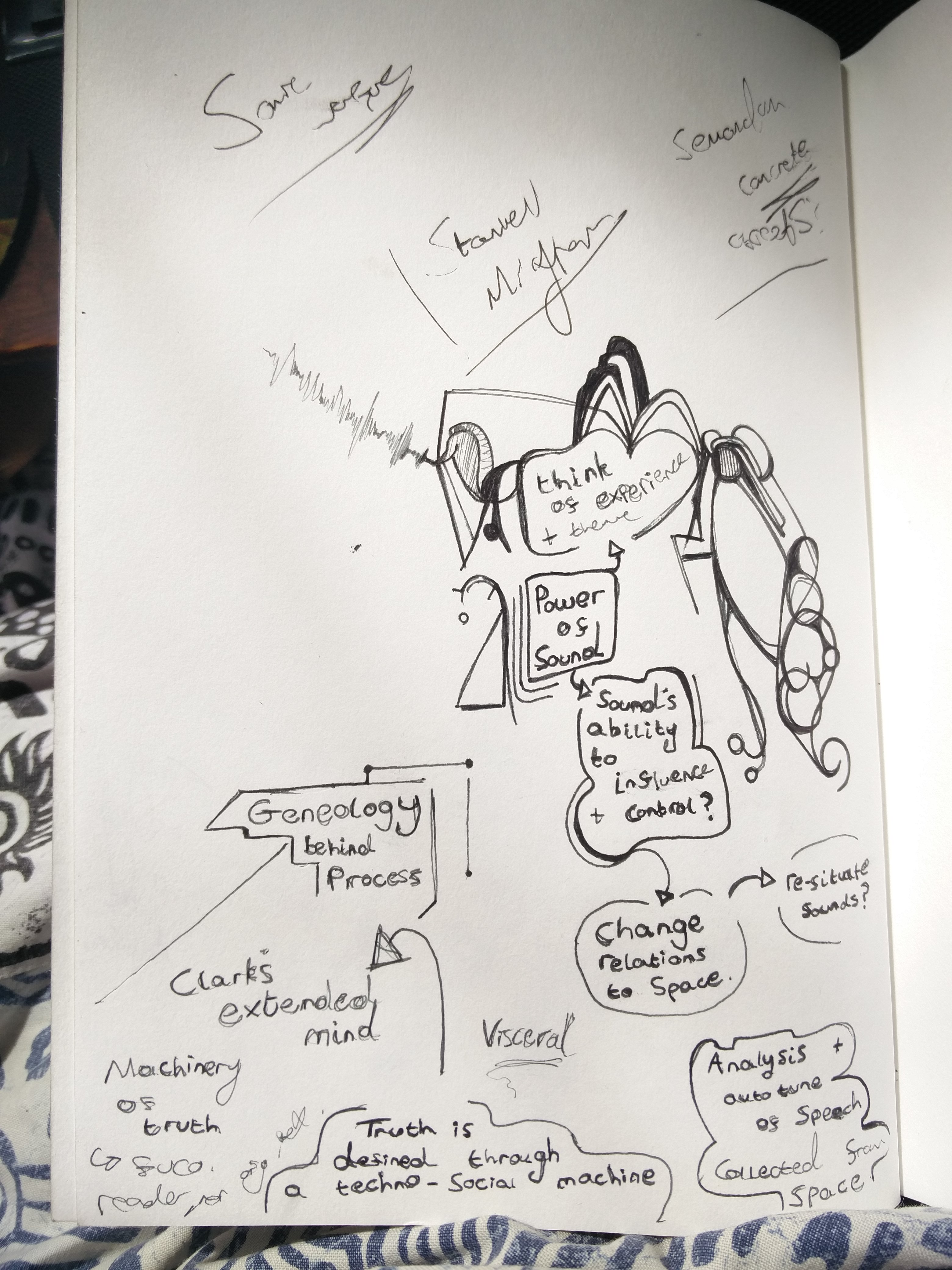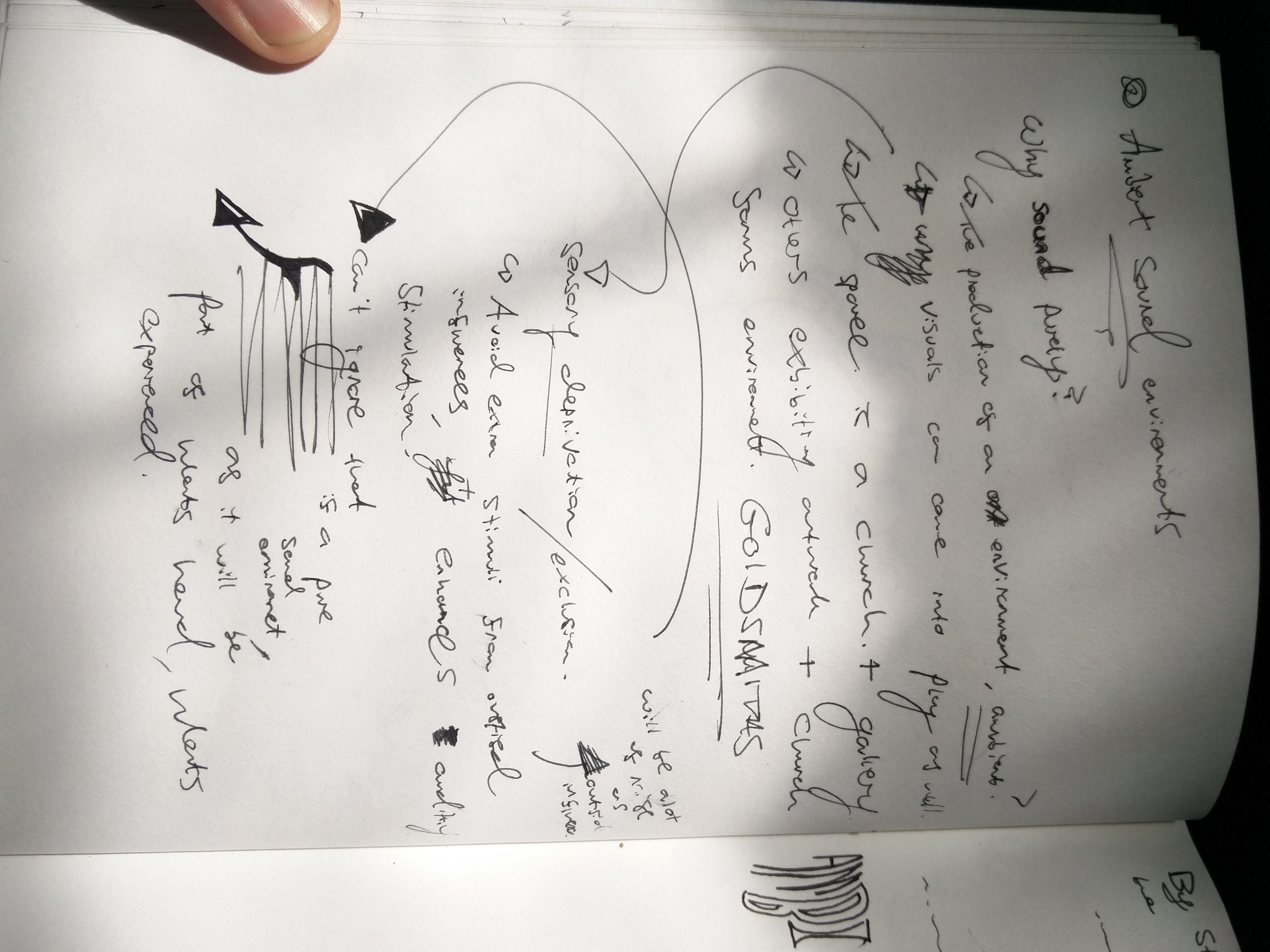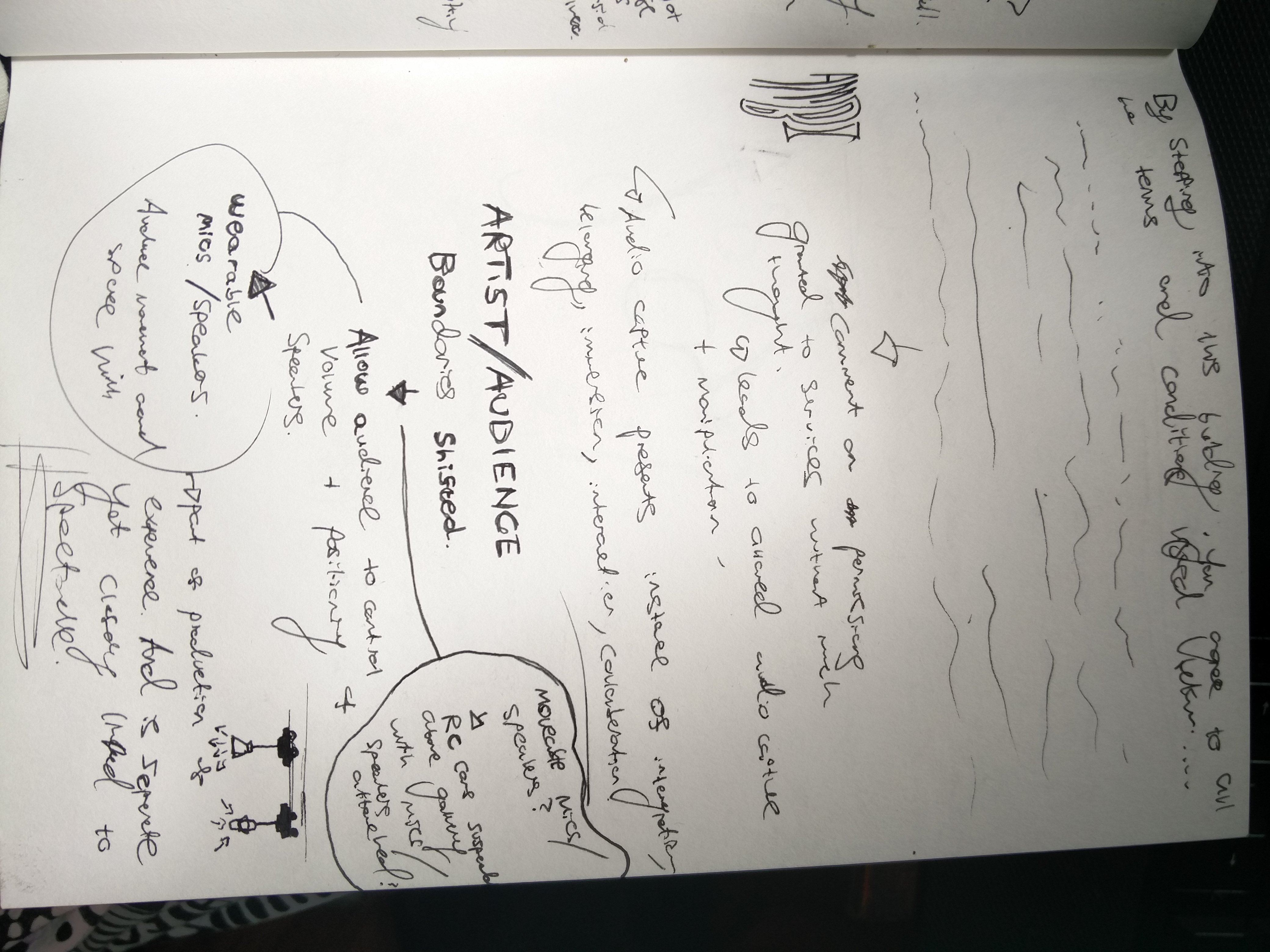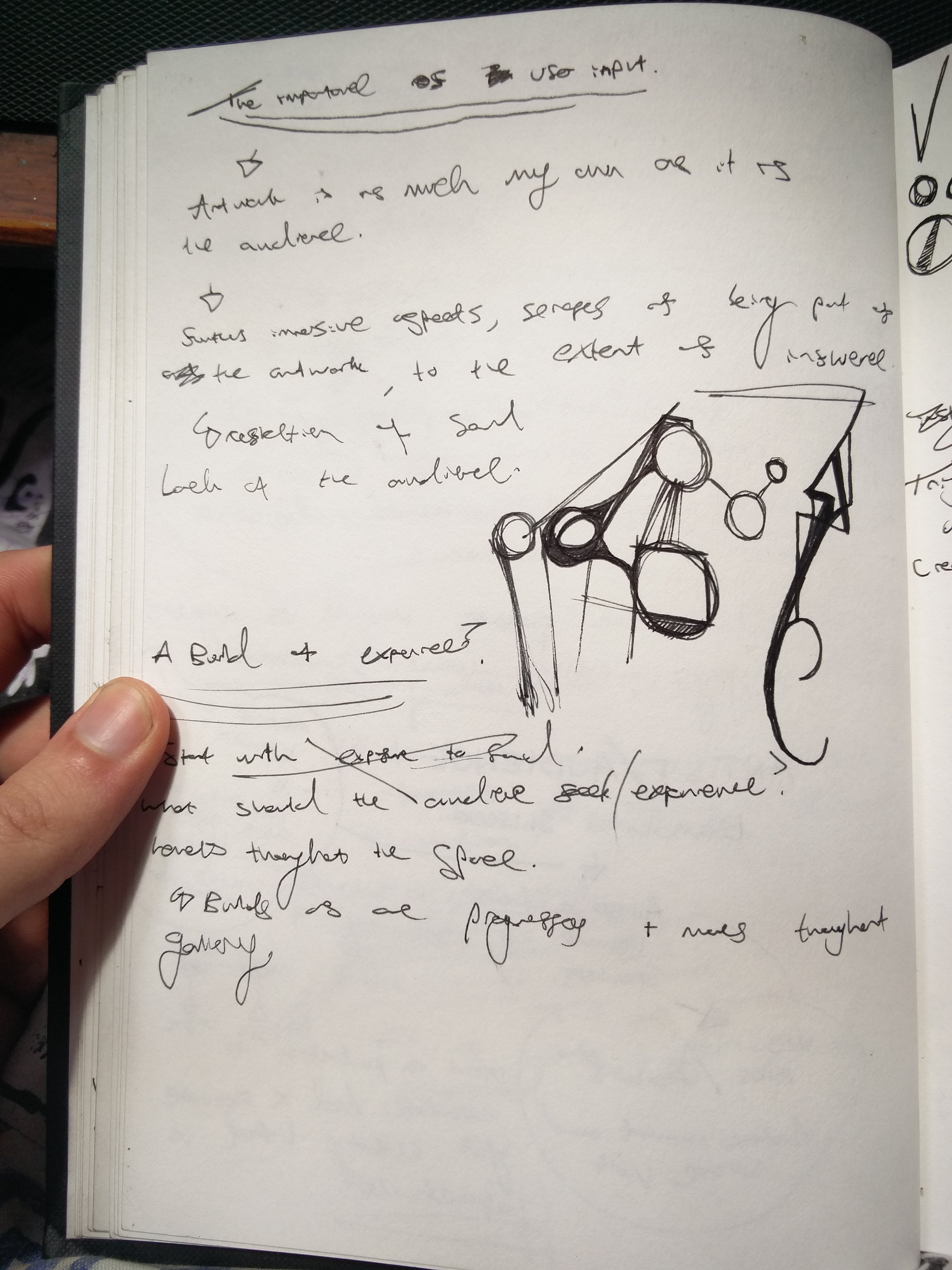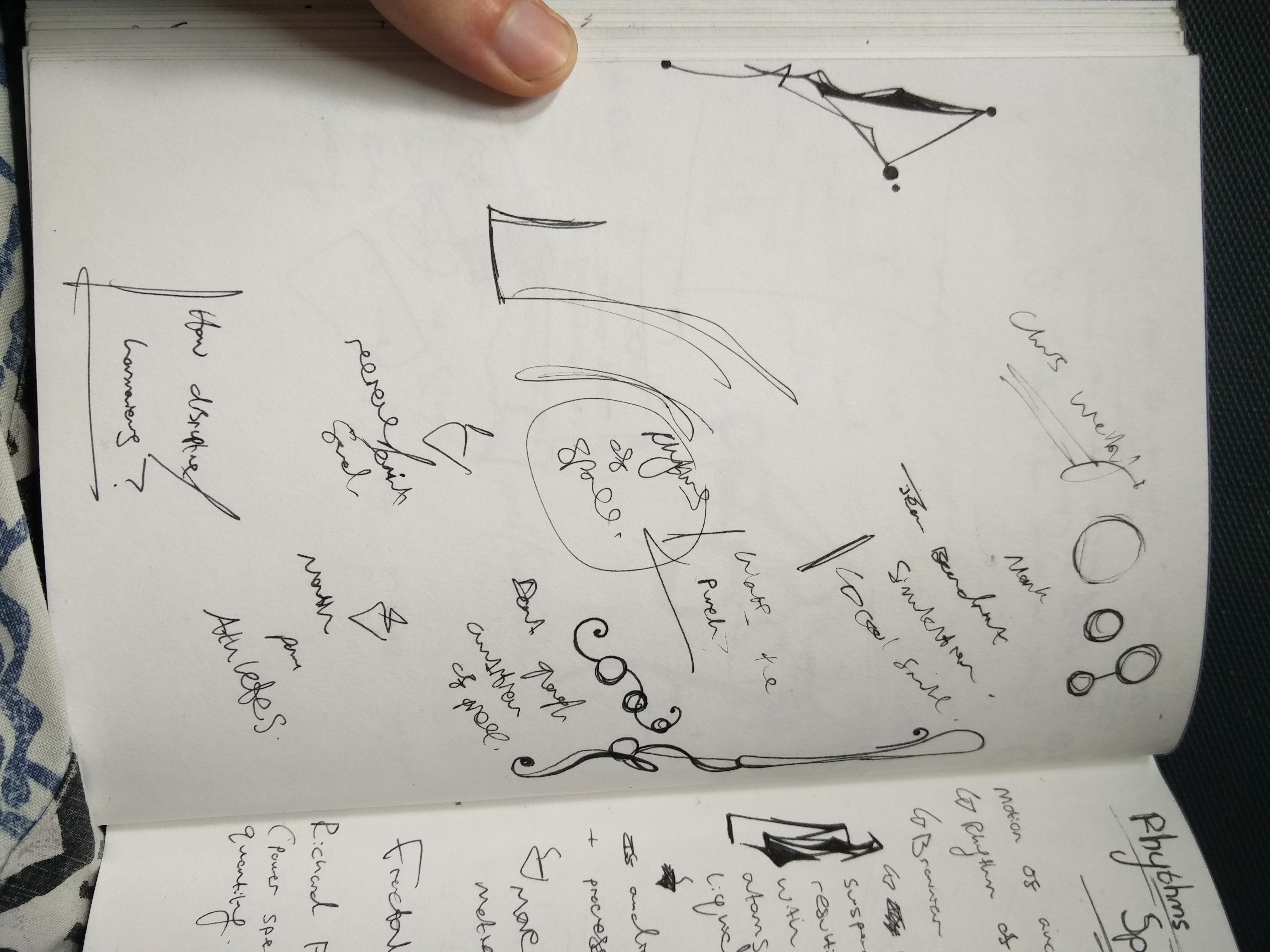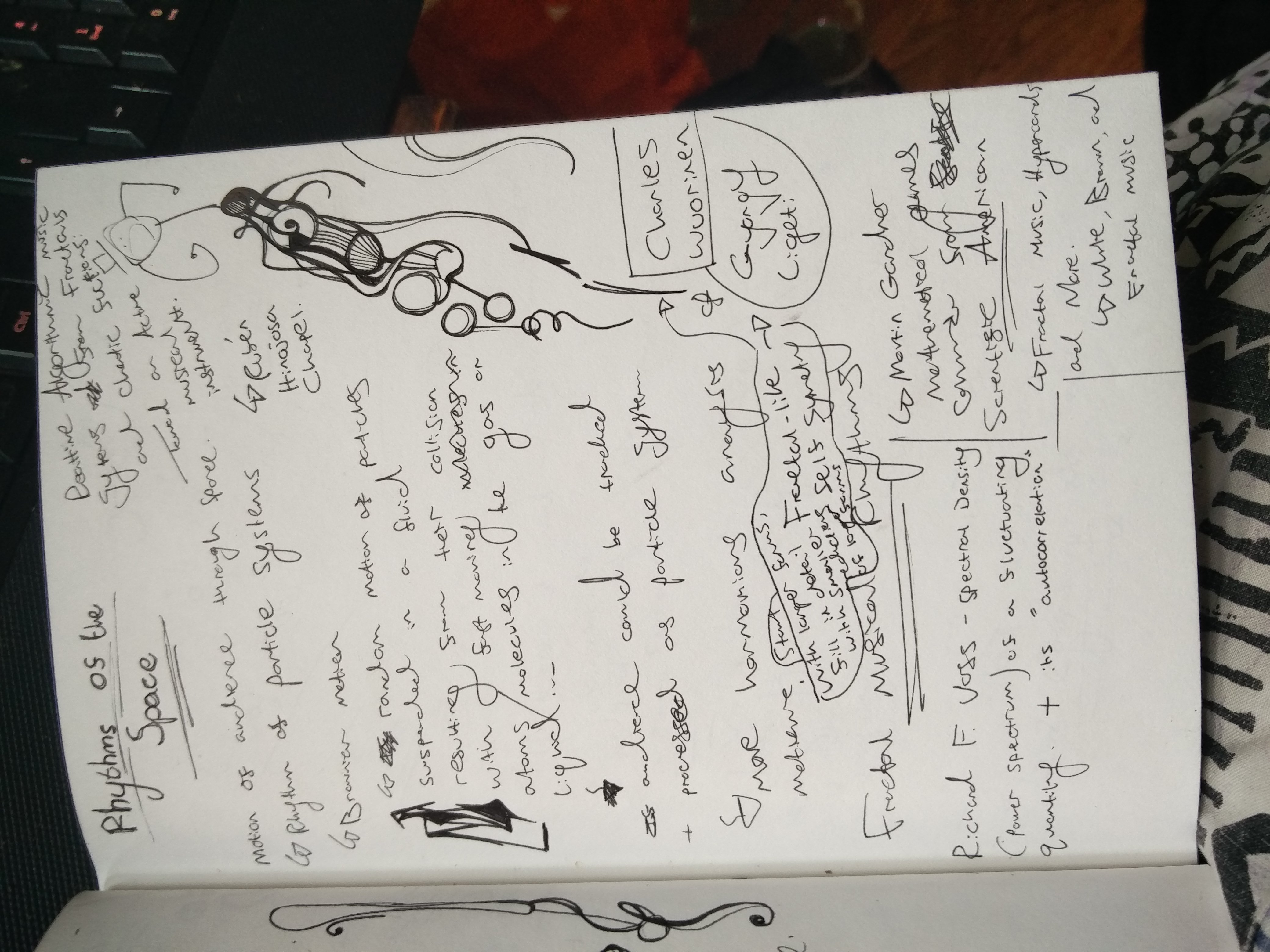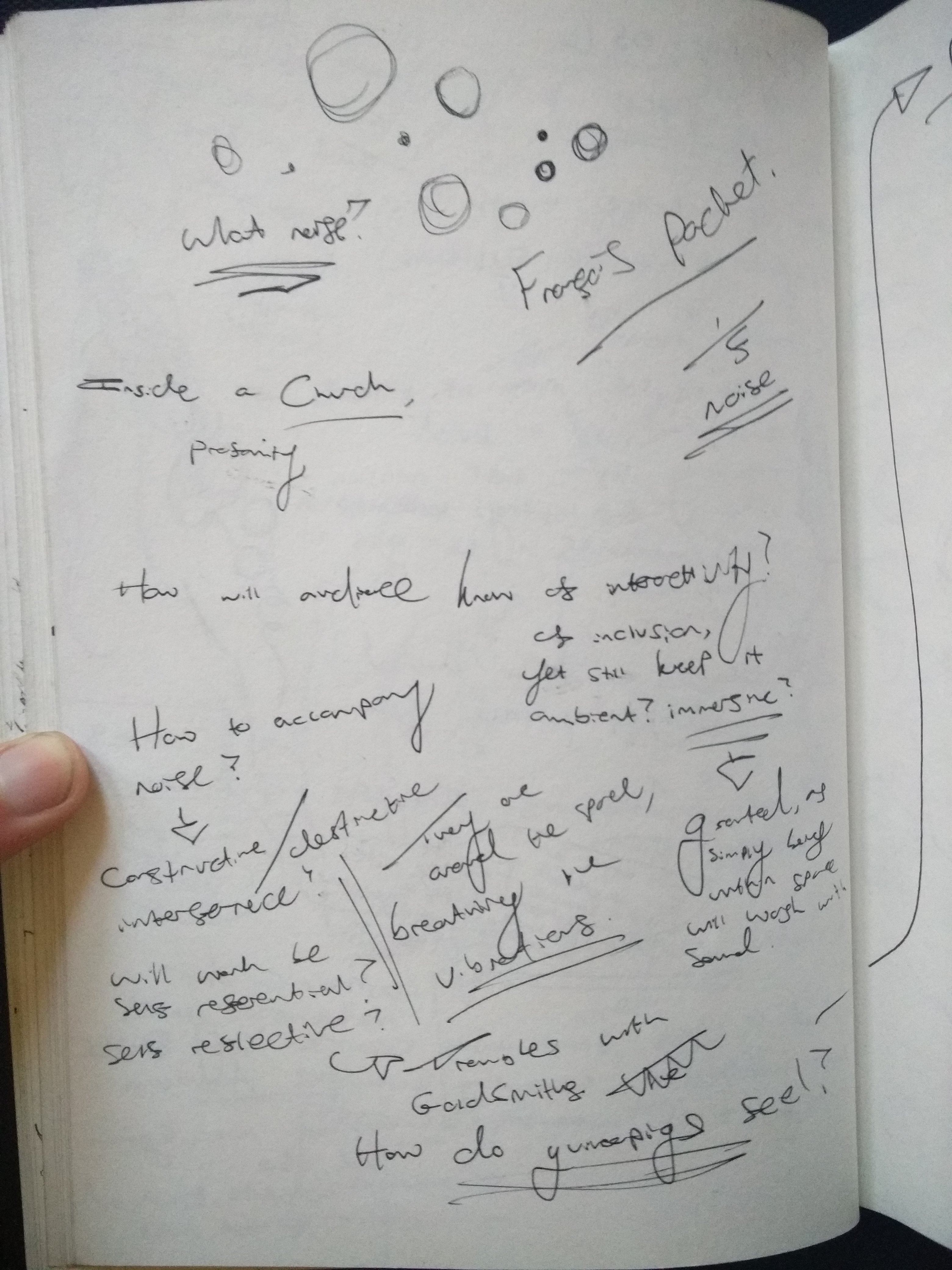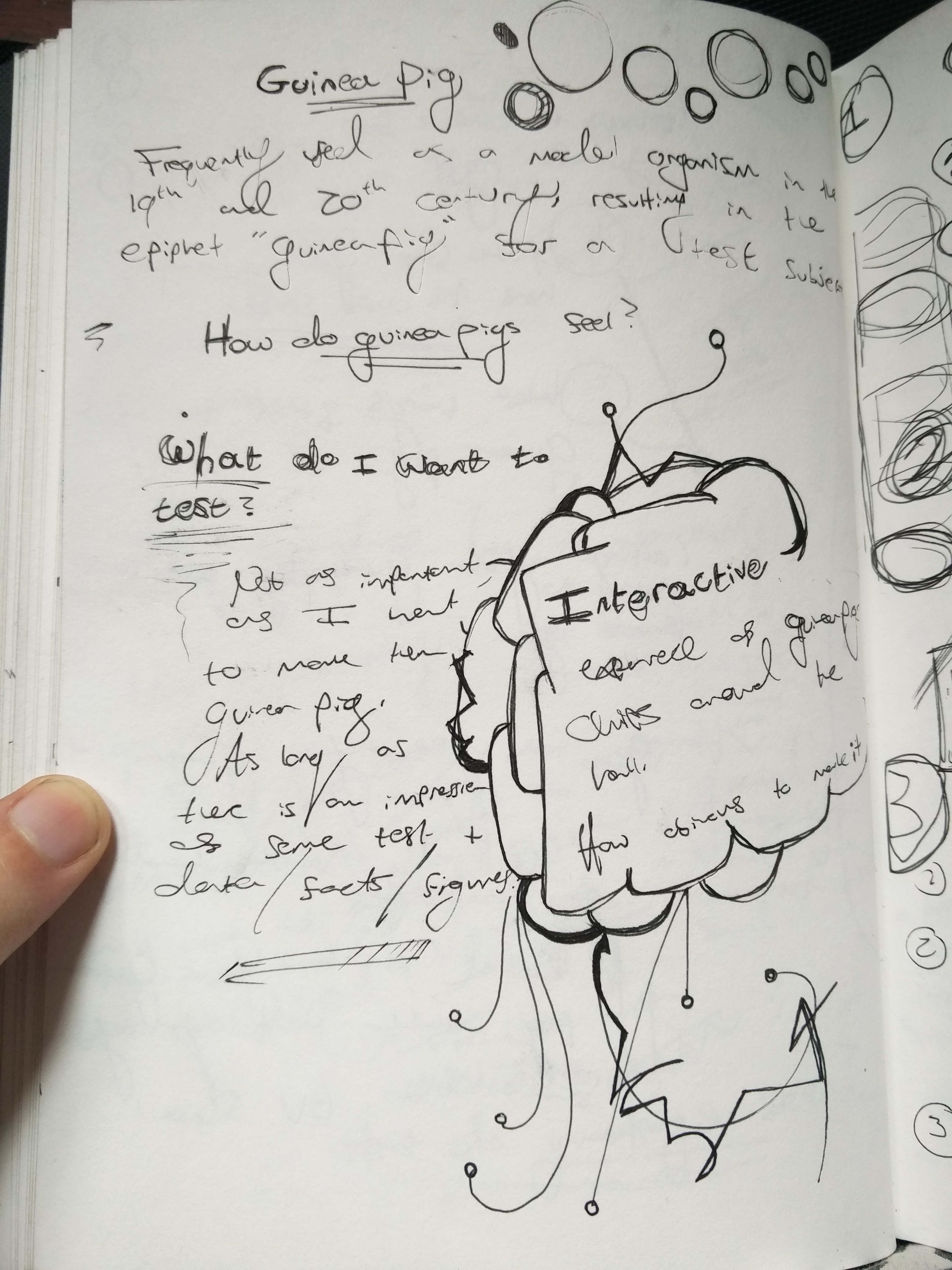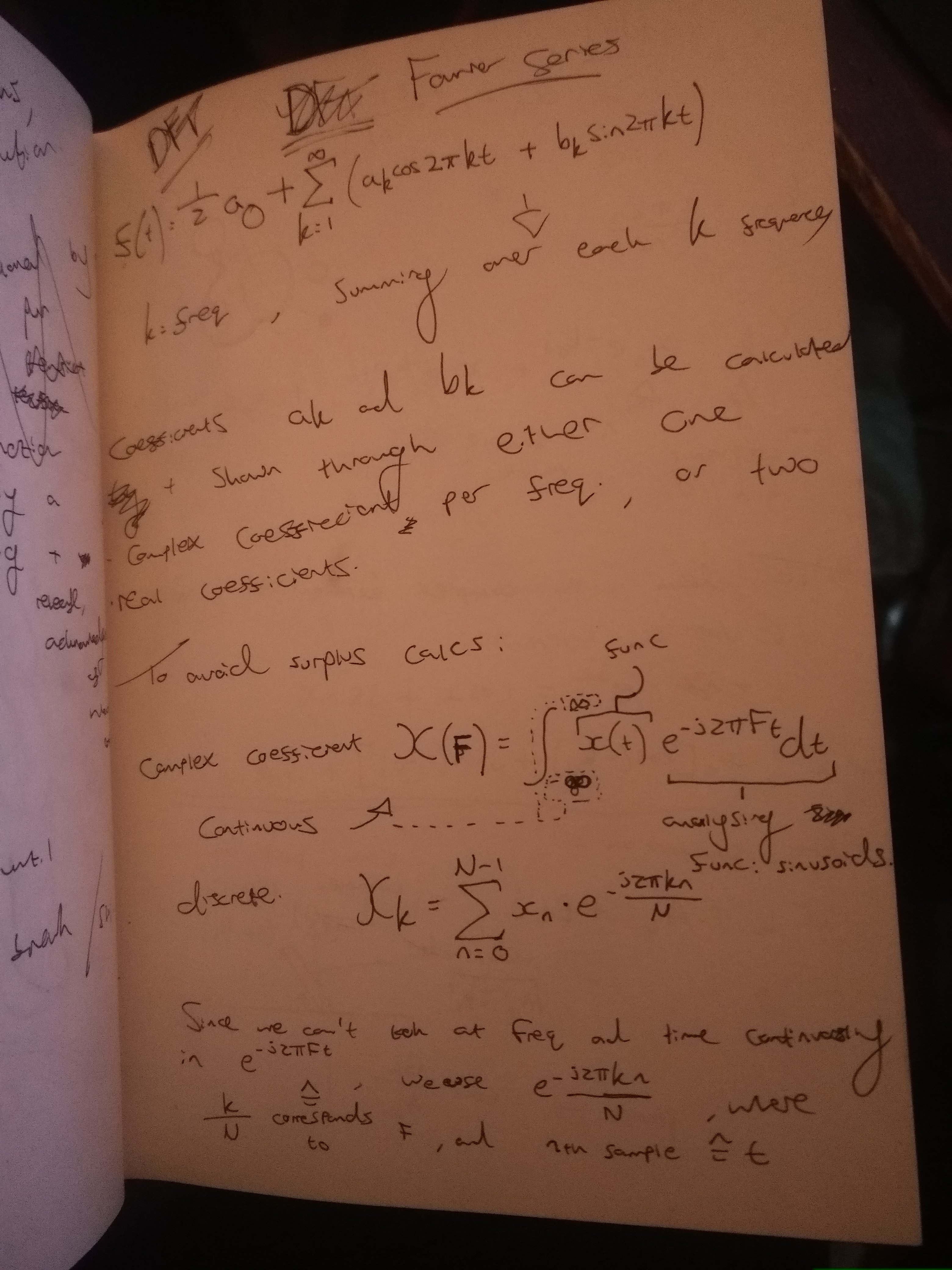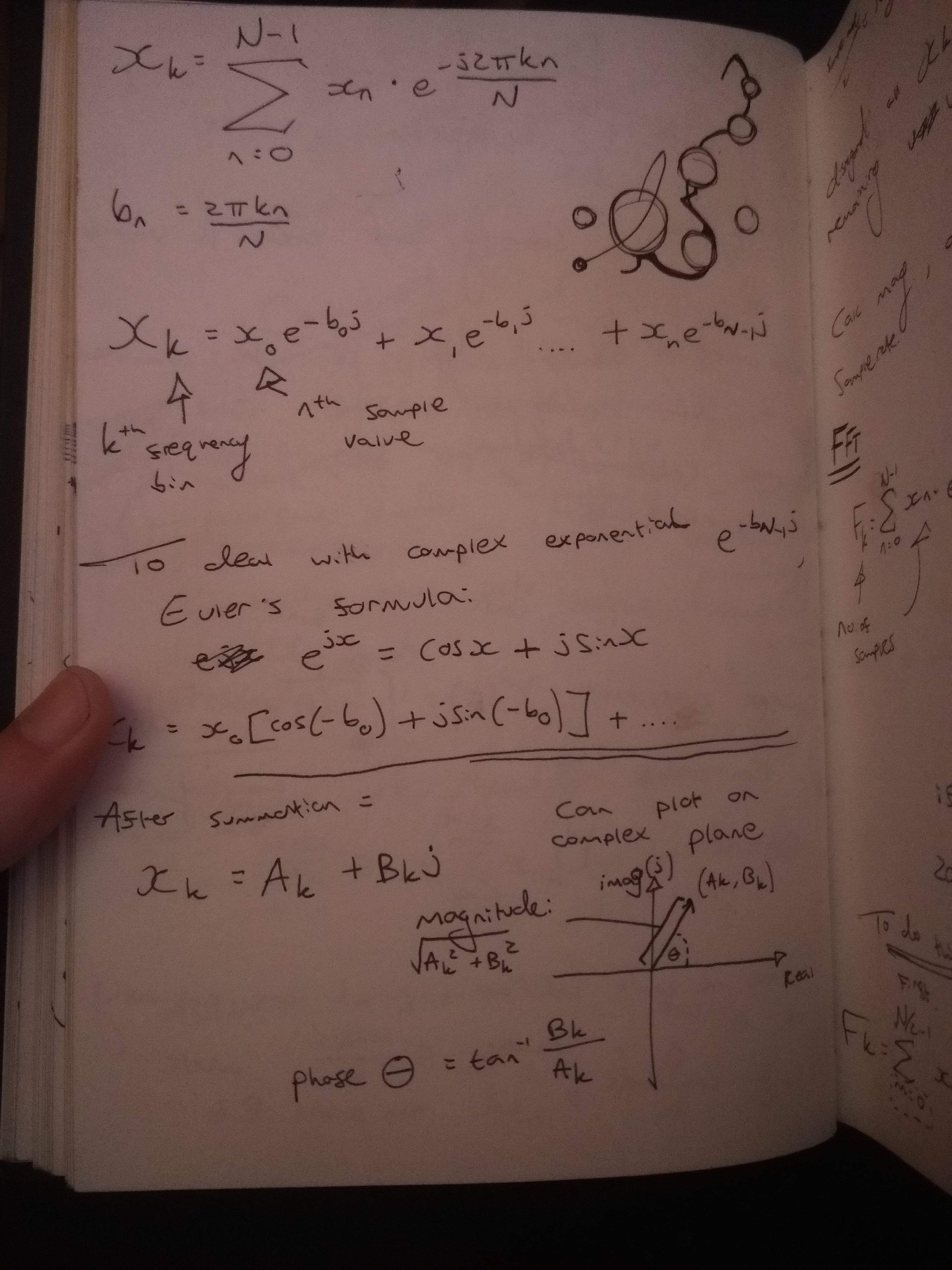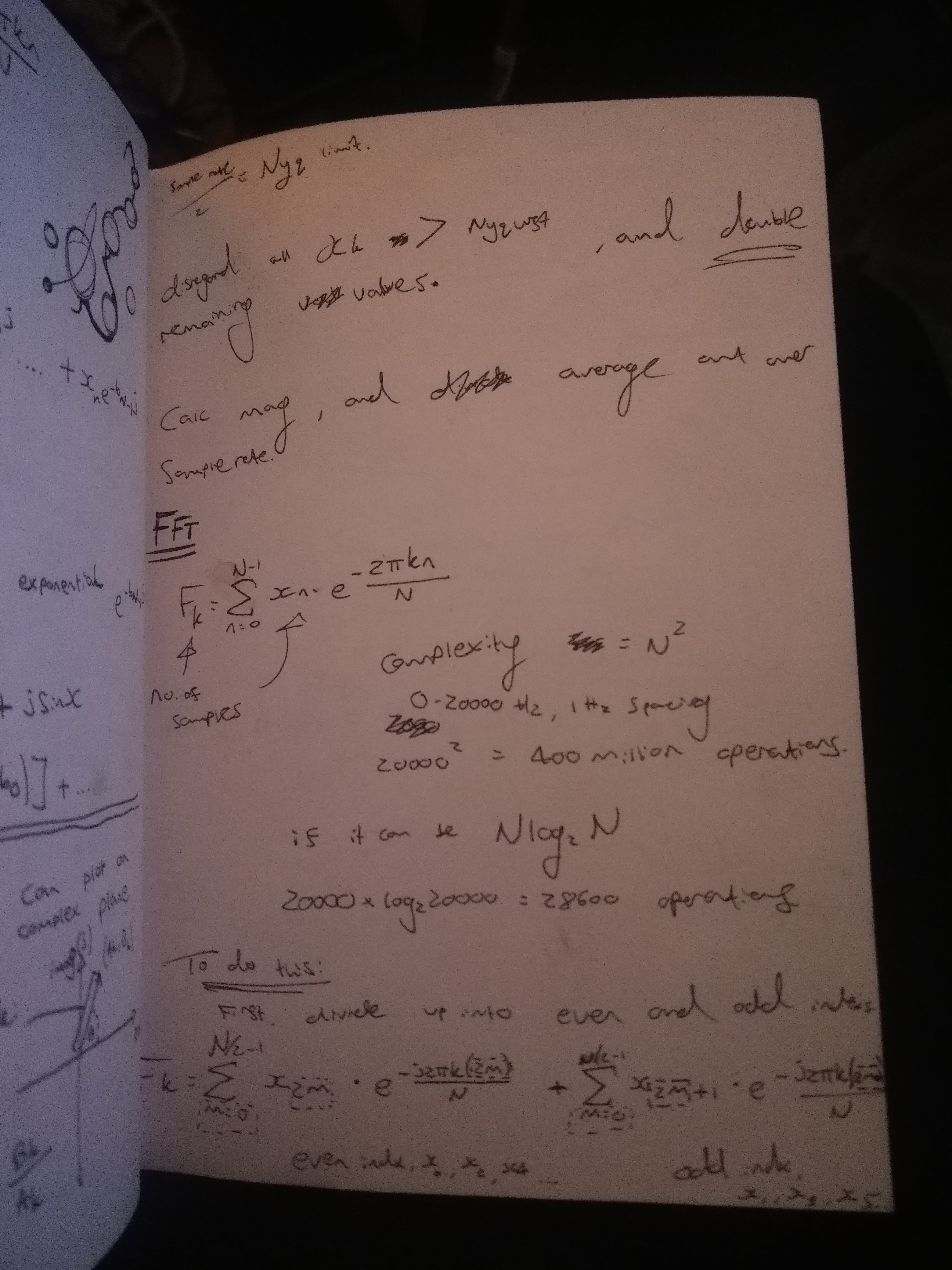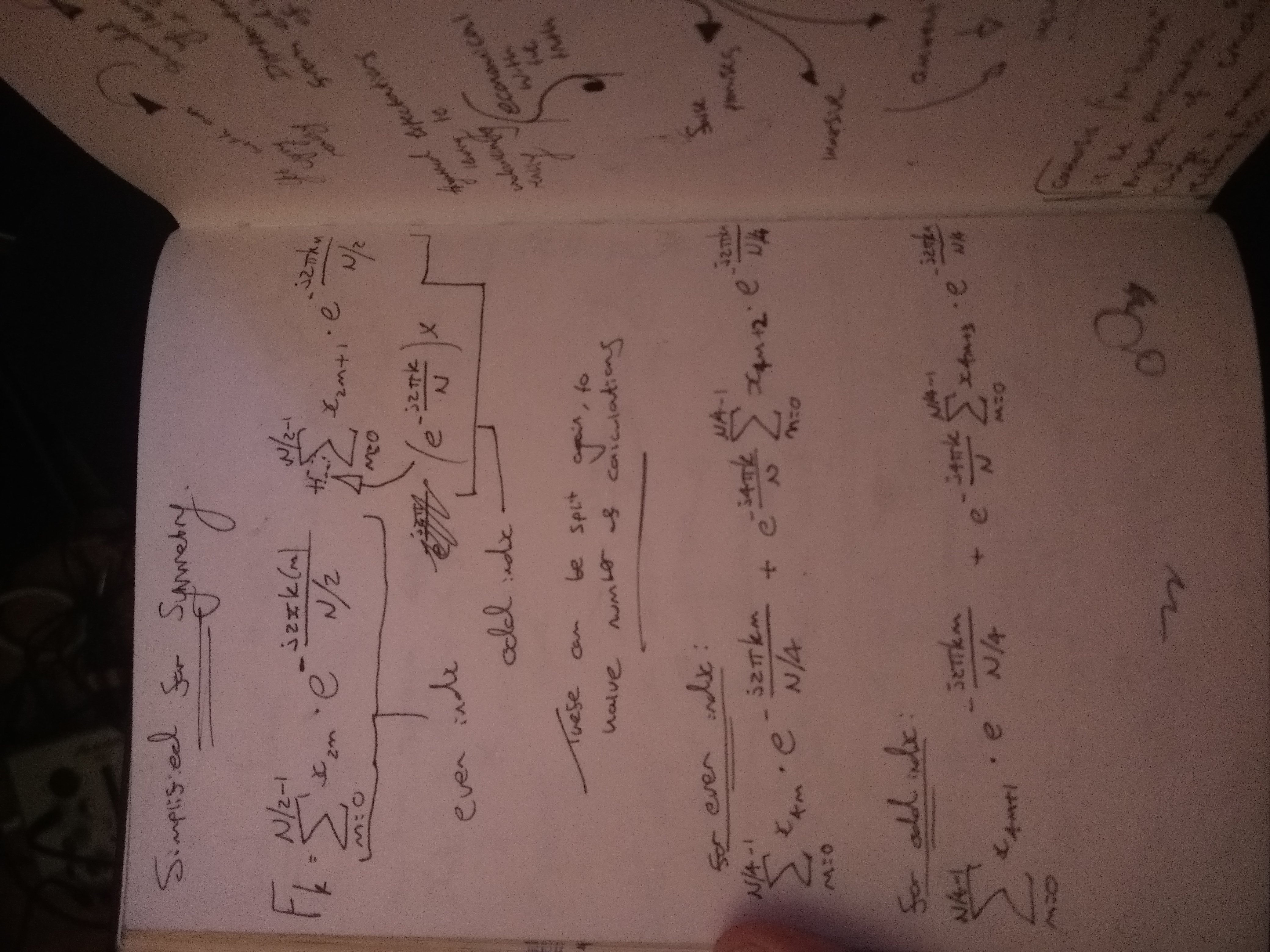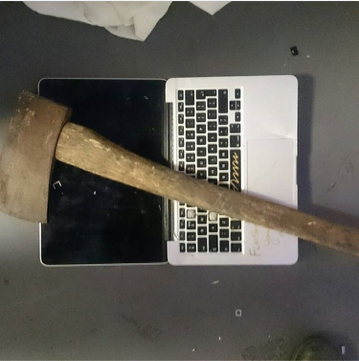

Come Dine with Me / Careful with That Axe, Eugene
Tom Pinsent
Come Dine with Me was an installation comprised of a dining table, Macbook, and axe. It acted as a framework for the alleviation of tensions of oppression caused by operation within institutions.
Careful with That Axe, Eugine exists as the result of such a framework, standing as a symbol of rebellion against exploitation, insincerity and excessive consumption, and as an ode to the cathartic power of tragedy.
Audience Statement
Through my piece I wanted to exploit the gallery format, in an attempt to present three different methods to relieve tension. The first was a removal of oneself from the piece - the viewer could simply walk away and exit the gallery. The second was comic - as the viewer involved themselves with the piece, and chose to press the stop button, they gained a momentary escape in the form of the ridiculous (flatulence, a process used for comedic effect for centuries). Yet, this is not a true catharsis, since as long as they continued to consume art, the art consumed them, in a reciprocal relationship, forever resulting in the regeneration of tensions. The third, and most powerful, release of tensions that I wanted to provide was the tragic. Outside this discourse of consumption and regeneration stood the axe. I wanted the presence of the axe to be akin to the oracle Tiresias, who predicted the inevitable and inescapable fate of Oedipus. The inclusion of the axe prefigured and made innevitable the destruction of my piece, as the final escape from such cycles of tension and release.
Creative Process
I began my project with the desire to create an interactive immersive environment. The potential for immersion within virtual reality headsets (Oculus Rift, HTC Vice, etc...) is amazing, yet I feel it's held back by two main factors: One, it is primarily a sole, personal experience. I believe there is power in the collective, part of which provides the ability for a viewer to reaffirm notions gained from an artwork as they interact with and respond to others within a gallery. Secondly, any external stimuli from the surrounding environment (sounds, smells, physical contact...) emphasises the inherent separation between user and percieved 'reality', the virtual reality, and hence causes the experience to never be fully immersive.
Such thoughts lead me towards wanting to create a 'real-virtual-reality', an augemnted environment, through the use of surround projection and motion tracking within a room. It was at this time that I saw a digital installtion by TeamLab, featured on BBC News: (from: 19:40 - 22:20 mins)
https://www.teamlab.art/w/crows_blossoming_on_collision/
This was everything I had in mind for my piece, and more, however seeing it in realisation caused me to consider whether my piece needed to be so over the top. Flashy, arbitrary graphics along with an overwhelming bombardment of technology is a combination that veers too close to attitudes that I have steered away from previously (and would still like to avoid): a near fetishisation of technology, where the materials and tools within the inner workings of a piece hold greater importance than the piece itself; imagine a painter placing a can of paint and a clean brush on a pedestal, presenting that as their work without attempting to paint anything. I could imagine such a piece to be quite popular if paint cans and brushes were something new, unknown, unseen or rarely experienced.
As a result I felt an urge to look away from immersion through an overload of the senses, towards negation and sensory deprivation.
Chris Watson - Okeanos at Ambika P3:
Okeanos is an 8-Channel surround sound installation, presented within a 14000sqft bunker, under complete darkness. It "celebrates songs, rhythms and music of the oceanic depths"(Caught by the River, 2015), composed from a series of underwater recordings, containing the sounds from wildlife such as seals, penguins, crustaceans and whales (some from up to 20km away). Recorded through the use of hydrophones, movements of ice masses and bodies of water can also be heard. Within the gallery, depth and height is conveyed by fixed speakers in different horizontal positions. Watson states that there has also been some research into creating recordings that aren't simpoly periphonic (horizontal sound such as 5.1 or 7.1), but also include actual height and depth information, produced from hydrophones places above and below the usual horizontal array of mics. Although not present in Okeanos, such technology might go in to the production of his future works.
Instead of bombarding the eyes with visual information that holds some relationship to its auduitiory counterpart (as is the way for many immersive digital installations), the complete opposite is committed by cutting all visual stimuli. This not only draws attention to, and increases the power of, auditory sensation, but also (I expect) acts as a catalyst for the imagination to conjure vivid imagery, scenes created from associations the audience draw from auditory queues, a sort of interaction through stimulation.
Here is a review of Okeanos, and here is an interview with Watson.
Researching sensory deprivation, I came accross the Ganzfeld Affect.
"A related phenomenon is perceptual deprivation, also called the ganzfeld effect. In this case a constant uniform stimulus is used instead of attempting to remove the stimuli; this leads to effects which have similarities to sensory deprivation" - (en.wikipedia.org, n.d.)
"The ganzfeld effect (from German for "complete field") or perceptual deprivation, is a phenomenon of perception caused by exposure to an unstructured, uniform stimulation field. The effect is the result of the brain amplifying neural noise in oprder to look for missing visual signals. The noise is interpreted in the higher visual cortex, and gives rise to hallucinations" - (en.wikipedia.org, n.d.)
This uniform stimulation field reminded me of Dream House, created by La Monte Young and Marian Zazeela.
Dream House is a "collaborative sound and light environment" (melafoundation.org, 2009), with Young's sound installations alongside Zazeela's visual work. La Monte Young's work "consists of 35 sine tones stretched across 10 octaves, 20 of them squeezed into a small band in the seventh octave, some separated by only 1/14th of a half step"(Gann, n.d.), resulting in an array of "tones that approximate the most consonant overtones, but are far more complex in their resulting combined wave forms"(Gann, n.d.). This produces an environment where pitches "swirl" and shift as the observer's position within the room changes, and with even the smallest of movements "you can alter the harmony you perceive simply by pulling on your earlobe"(Gann, n.d.). An interaction percieved simply through one's own presence, in an area where sound becomes space and space becomes sound. Futhermore, such effects continue as one remains in the gallery and experiences Zazeela's works, without direct, intended interaction or focus. With Zazeela's magenta washes of light throughout the entire space, combined with form and shadow to produce optical illusions, the opposite is also true - an observer is also under the influence of, and also interacts with, Zazeela's work, without specific intention, through mere ambient sensory stimulation.
Although the effects on the observer produced from Dream House may not be the "result of the brian amplifying neural noise in order to look for missing visual signals", they are the result of a constant stimulus that is uniform within the space, along with the destruction of such unity, existing as a by-product of an observers fluid presence within a space. I found this almost secondary, accidental interaction with a piece really interesting, so I decided to recreate La Monte Young's Magic Chord experiment described by William Duckworth - "When the Magic Opening Chord is obtained by playing the Opening Chord at one end of a room while the Magic Chord is played at the other (as Young set it up for me), the feeling-changes of the stereo effect as you move back and forth[-]are dazzling." (Duckworth, 2009)
I placed one speaker at both ends of a large room, and constructed a program to play the Magic Chord from one side, and the Opening Chord from the other. The Magic Chords consists of pitches E, F, A, Bâ™, D, E, G and A (in ascending order), and does not contain its root note, Eâ™. This is introduced by the opening chord (along with a C note, the harmonic 7th), which is comprised of Eâ™, Bâ™, C, Eâ™, F, Bâ™ (also in ascending order). I askled volunteers to move through the space, and give feedback on what was heard, the changes in sound (if any) perceived as they moved between the speakers. Some volunteers heard specific pitches of tones within the chords change, while others heard the addition / subtraction of tones. There was a mixture in response for the strength of the effects, from quite subtle changes in sound to very noticeable, however everyone in the experiment did notice an overall relationship between percieved sound and movement within space.
This made me want to explore the relationship between sound and space further, and influenced an idea of using a combination of directional sound and reflective / absorbent surfaces to create intermittent and scattered beams of audio within the gallery. Having the piece across the whole gallery space was very important to me, since I wanted to preserve the secondary interaction and ambient stimulation found within Dream House. If it was separated, in its own space, such an effect would not take place, as the viewer's only reason for being in that room would be to experience and focus on my work.
I began researching the technical viability of directional sound, and found two main methods of producing it: through parabolic speakers or ultrasonic arrays. Stadiums and large arenas use arrays of loudspeakers to influence directivity of sound, yet this just wasn't viable for a small gallery installation.
Some hacky how-tos for parabolic speakers:
http://www.instructables.com/id/Analogue-Directional-Speakers-How-to-Make-and-Test/
https://www.techwalla.com/articles/diy-parabolic-speaker
Responses to such systems were varied, yet with most stating that both the quality and directivity of produced sound are pretty poor.
Ultrasonic arrays seemed like the right route to go down. How-tos:
http://zao.jp/radio/parametric/index_e.php
https://hackaday.io/project/9085/logs
http://legacy.spa.aalto.fi/dafx08/papers/dafx08_41.pdf
http://www.homemade-circuits.com/2014/06/making-ultrasonic-directive-speaker.html
When looking for information on ultrasonic arrays, I came across this video: https://www.youtube.com/watch?v=odJxJRAxdFU
It shows a set up of four ultrasonic arrays used to create and control standing waves within the air using ultrasound. Parts of the video are absolutely gorgeous (see 1:00 - 1:07), and caused me to consider visualising what viewers might/might not be hearing. Yet standing waves with ultrasound can only be created over a small distance, due to short wavelengths. At this point I was considering creating a visualisation over a larger space, using standing waves from sub bass (since lower frequencies have much larger wavelengths), yet soon decided to leave this idea for a future piece. Simple and direct is best, and this was veering too far away from the ideas that I wanted to explore.
I also decided to dismiss the reflective / absorbant surfaces, as I thought it would be much more interesting to have multiple directional speakers placed at various spots around the gallery, each with a microphone place above. The mic would be used to collect ambient sound within that area, with the speaker below, pointing vertically down, would produce a processed version of that sound. A variety of effects could be used to distort the sound, or even to cancel it out through negative waveforms to create an experience of varying intensity throughout the gallery.
To test this, I was going to create a prototype speaker and microphone system, and test within a controlled area. How does it work in a quiet space with minimal sound? How will that compare when in an unpredicatble scenario such as a gallery, with the sounds of coats, chatter, shouting, other works?
It was at this point that I was advised not to go down the route of directional speakers, as even with ultrasonic array, both the volume and the range of frequencies representable are quite poor - "it's like listening to a telephone from 3m away". There are more professional, commercially available directional speakers, yet they are all far to expensive for me to have considered them viable.
I took this chance to review my concept, as I was still unsure what I was providing to the audience.
During this process I went through ideas that shifted the amount of control the audience would have in experiencing the piece, from speakers on wearable hats to speakers suspended from an upside-down RC car track, with controls to allow viewers to adjust speed and volume of the cars.
I arrived at a place where I would generate music from the movements of people around the gallery, capturing the rhythms of the space. I thought that, essentially, those within a gallery were like particles within a box, with movement akin to Brownian Motion, yet more directed, more harmonious. Using cameras placed high up in the gallery, the audience could be tracked and processed like a particle system, with their positioning and flow used to generate music. Research into the sonification of brownian motion lead me on to read about 1/f (pink) noise and its place among fractal musical rhythms (Gardner, 1992).
Although programatically interesting, I still felt that the concept here was not strong enough, with my ambient sound installation essentially being like Brian Eno, Music for Airports (Eno, 1978). I love Brian Eno, but what would I be adding to an already amazing project? What more would I be providing the audience with?
I decided that if I wanted to truly say something meaningful, I had to deal with issues that were affecting me at the time, and if it was to be an installation, it must be referential to the space that its in.
As a member of the first year to be recruited onto Digital Arts Computing, I felt, at times, like a guinea pig.
Frequently used as a model organism in the 19th and 20th century, resulting in the epiphet "guinea ping" for a test subject. I googled "how do guinea pigs feel" and came across a Wiki How article titled "How to Tame Your Guinea Pig". Some of the points on this list resonated with my experiences a lot, such as "make sure your guinea pigs has its own space". Although never promised a studio space to work within, many of us have wanted one and felt like it was needed when considering some of the requirements of the course. To both express these feelings and include the audience, I thought I could treat the audience as guinea pigs, based on the Wiki How article. I planned to transform the gallery space into a giant guinea pig cage (wood chips/saw dust on the floor, bars on the windows, alcohol dispensed from massive hamster water bottles), and make sure I fulfill each point on the Wiki How list, through the use of interactive installation and performative aspects. Meanwhile, the positions of the audience would be collected and used as test data to generate music for a future exhibition. This data would be presented to the audience as well, to make feelings of being tested upon apparent. Furthermore, they would realise that as long as they are within the gallery, they would be used for data collection and experimentation, with the only escape from such a system being a removal of oneself from the space. Upon critique, I realised that it was a bit of a knee-jerk reaction, my motivations behind the piece would not be clear, and that decorating the entire exhibition space was not viable, or fair on the other artists. I was at a point to chose between spectacle and a real connection with the audience.
I took a step back and realised that what I was searching for was a moment of catharsis, "the purification and purgation of emotions-especially pity and fear-through art or any extreme change in emotion that results in renewal and restoration" (en.wikipedia.org, n.d.). I still wanted to place an element of mutual control between the piece and audience, and hence proposed having two mechanisms within the gallery - one to add sound, one to clear sound. This left the experience of the piece in the hands of the audience, since they decide how much they hear, if anything at all. I thought that I could bring contextual reference and theme through the use of audio samples. I planned to extract the most musical sections from the sound, arranging them into a database of notes or keys. I would then arrange these into an audio collage, that began fairly pleasant, yet declined into a cacophony of dissonance and noise. Last summer I saw the Belcea Quartet perform a Shostakovich piece at Snape Maltings concert hall, and was blown away by how raw and disgustingly beautiful some of the harmonies were. Harmonies such as these would be perfect for building tensions.
Yet with two mechanism to interact with, my work was gaining a physical form yet again. What would the mechanisms be, and why? Well I already had the first, with sound being generated from viewers' movements throughout the gallery. What would the second be? I looked at the relationship between the actual movement and generation of sound. What is the movement? Displacement throughout a space. Motion as one functions within a gallery. A by-product of a viewers desires to consume art. Yet this consumption is mutual, since my piece collects and uses the gallery-goers movements as fuel, as food to generate and modulate sound.
At this point my work was going to consist of one camera presented on a plate, along with a waiters service bell to trigger the relief of tensions and elimination of sound. I began programming an FFT to aid in the analysis and extraction of musical audio. I then started looking at effective windowing methods to minimise noise, along with more efficient methods of memory management. I then realised two things: I didn't need the extra efficiency, or even the samples themselves. Modern computational power is more than capable of carrying out real-time analysis within the buffer size that I needed. Also, I didn't need samples or any extra contextuality or theming. In The World as Will and Representation, Schopenhauer states that music is an immediate, in the sense that it affects the listener before thought. "its effect on man's inner most nature is so powerful, and it is so completely and profoundly understood by him in his inner most being as an entirely universal language, whose distinctness surpasses even that of the world of perception". It's a direct duplication of the will rather than an aesthetic representation that exists within ideas. Following such thought, mere harmony and intervallic relationship would be more than enough. Furthermore, the elimnation of context within the audio increases the accessibility and potential for inspiring collectivity and unity among the audience.
But now I had created a system that traps those within a gallery in an infinite cycle of tension, relief, tension, relief... a relief which I'm sure would dwindle as users realise the hopelessness of the situation. I must give them an option to escape the abuse of a system which I have created, alongside their exit from the gallery, that is. A sledge hammer seemed like the logical conclusion, however my housemate had an axe that was even better.
As a last minute decision, I realised that I didn't need a webcam, or a button either, as my Macbook has both. The decision to include the Macbook was the last touch to make it real. Just having the axe with a webcam did not provide the extent of risk and danger that I felt was needed; I'm sure someone would have just smashed it for fun. By the attatchment of value, of both monetary and personal, a true sense of loss would be experienced, increasing the power of cathartic release, and a true sense of tragedy.
"Tragedy, by definition, is a mimesis not of people, but of their actions and life [...] In other words, the end and aim of human life is doing something, not just being a certain sort of person."(Aristotle 1450a, Cooper 1997) I wanted to provide a possible catharsis through the destruction of a fetishised commodity.
I was able to obtain a silver dining tray to place the laptop on to further the aesthetic of food, while hoisting the table cloth high behind the table, in an effort to act as both a table cloth, and as a dust sheet that a serial killer might put down before murdering someone.
I decided not to back up my personal files and project code, as this would increase the sense of value and potential loss. And, in the case of destruction, what would be destroyed if the piece lived on?
Evaluation
There is no way that I could have envisioned the end point of my piece. This is partly due to the fact through the creative process one discovers new stimulation, inspiration that I enjoy to explore, and allow to develop quite naturally. The audience on the whole responded as I had expected, with a mixture of reaction. Some found very little interest in the piece, while others were in histerics at the sound relieving flatulence (the free alcohol might have had a part to play here).
Although there were three main methods to relieve tension, there was one member of the audience who found a fourth - close the Macbook lid. Interestingly enough, he told me that the only reason he came was because "there was a guy letting people smash up his Macbook". After explaining that, yes, it really was my Macbook, and neither confirming nor denying urges to destroy it, he admitted that he wasn't really going to do it, and then left the gallery. The person that was attracted by mention of violence was the only person that found a peaceful solution to the situation. This was great, as I had downloaded a program to aid me in the disabling of keys so I could minimise interaction. However, to further the trust placed in the viewer I left it unlocked, allowing viewers to do what they want. They could close the program, go on my facebook, turn it off, yet due to the mere presence of the axe, most responses were hungry desires to smash the Macbook.
Ixtli's decision to destroy the piece was not that of pleasure, or a blind act of rage, rather he saw his place within the piece as pre-ordained by a plethora of tensions that brewed alongside the sonic aggrevation of my work. Ixtli's work was next to mine within the gallery, and although there was no individual target for my work, he became sensitive to it due to the disruption it caused to his work's delicate conversational nature. Futhermore, for Ixtli, the Macbook stood for much more than merely my laptop. It was a symbol, a totem, an emblem, a signifier of popular digital culture. On the surface it stands for Apple's utopian ideals, that bury and disguise the ugly reality of exploitation, insincerity and insatiable consumption of the reified capitalist commidity. The loathing for such themes within both Ixtli and I had recently been fueled by a presentation by Andrew Shobhen, a presentation that I am now grateful of, since not only did it serve as a reminder of what to avoid within the art world, yet it also acted as a key element in the destruction and ultimate creation of my work.
Potentially, no one could have destroyed the work, yet with this prediction of fate, Ixtli saw himself as the Tragic hero, the vehical for the inevitable destruction of the artwork. The axe, a tool for destruction, acted as a tool for cathartic release. In hindsight, it would have been good to back up some of my personal files, since I have lost some ideas, writings and recordings. However, these had all been collecting cyber-dust for a while now, with the loss of which marking a fresh start for my creative exploration.
"Tragedy is a mimesis not only of a complete action, but also of things arousing pity and fear, emotions most likely to be stirred when things happen unexpectedly but because of each other (this arouses more surprise than mere chance events, since even chance events seem more marvellous when they look as if they were meant to happen[...])". (Aristotle 1452a, Cooper, 1997).
Careful with That Axe, Eugene! - the making of
Link to Gitlab (note, the code here is only experimentation, as the final project code was destroyed along with the piece. Simple webcrawler examples along with arduino sketches were also lost. I wanted to remake some of the code for documentation purposes, yet that just wasn't feasible given the time I had after being notified that my hard drive wasn't recoverable).
References
- Broughton, E. (2016). An Interview With Chris Watson. [online] Caught by the River. Available at: http://www.caughtbytheriver.net/2016/05/08/an-interview-with-chris-watson-field-recording-okeanos-ellie-broughton/ [Accessed 20 Nov. 2016].
- Cooper, D., Lamarque, P. and Sartwell, C. (1997). Aesthetics: the classic readings. 1st ed. Blackwell, pp.29-44.
- Duckworth, W. and Fleming, R. (1996). Sound and light. 1st ed. Lewisburg, Pa.: Bucknell University Press, p.187.
- En.wikipedia.org. (n.d.). Catharsis. [online] Available at: https://en.wikipedia.org/wiki/Catharsis [Accessed 8 Feb. 2017].
- En.wikipedia.org. (n.d.). Ganzfeld effect. [online] Available at: https://en.wikipedia.org/wiki/Ganzfeld_effect [Accessed 21 Nov. 2016].
- En.wikipedia.org. (n.d.). Sensory deprivation. [online] Available at: https://en.wikipedia.org/wiki/Sensory_deprivation [Accessed 23 Nov. 2016].
- Eno, B. (1978). Ambient 1: Music for Airports. London, England: Editions EG.
- Gann, K. (n.d.). Mela Foundation. [online] Melafoundation.org. Available at: http://www.melafoundation.org/gann.htm [Accessed 17 Oct. 2016].
- Gardner, M. (1992). Fractal music, hypercards and more--. 1st ed. New York: W.H. Freeman, pp.1-23.
- Goodman, S. (2012). Sonic warfare. 1st ed. Cambridge, Mass.: MIT Press.
- Melafoundation.org. (2017). Mela Foundation. [online] Available at: http://www.melafoundation.org/DHpressFY16.html [Accessed 17 Oct. 2016].
- Melafoundation.org. (n.d.). Mela Foundation. [online] Available at: http://www.melafoundation.org/dream02.htm [Accessed 17 Oct. 2016].
- Rees-Williams, D. (2015). REVIEW: Chris Watson's Okeanos (LCMF 2015). [online] Londonjazznews.com. Available at: http://www.londonjazznews.com/2015/12/review-chris-watsons-okeanos-lcmf-2015.html [Accessed 20 Nov. 2016].


